#seeking rpg players
Text
I think a lot of the advice about running tabletop RPGs that you get on this site tends to forget that groups typically have more than one player. Like, yes, facilitating player agency is any competent GM's goal, but y'all, the reason the player who wants to immediately stab every named NPC in the face is reviled isn't because control-freak GMs don't like having their plans ruined. It's because if you let that player have their way, they're the only one who gets to exercise any agency at all. Either the entire group only does what the maximum-disruption-all-time-time player wants to do, forever, or they kick that player out of the game. Those are the only options – and that player knows it. They're exploiting the group's natural tendency to seek consensus to issue a tacit ultimatum: "either everyone does what I want, or the in-game drama escalates to out-of-game drama". That's why people hate dealing with that player – it's not just a GM thing.
6K notes
·
View notes
Text
Good riddance to the Open Gaming License
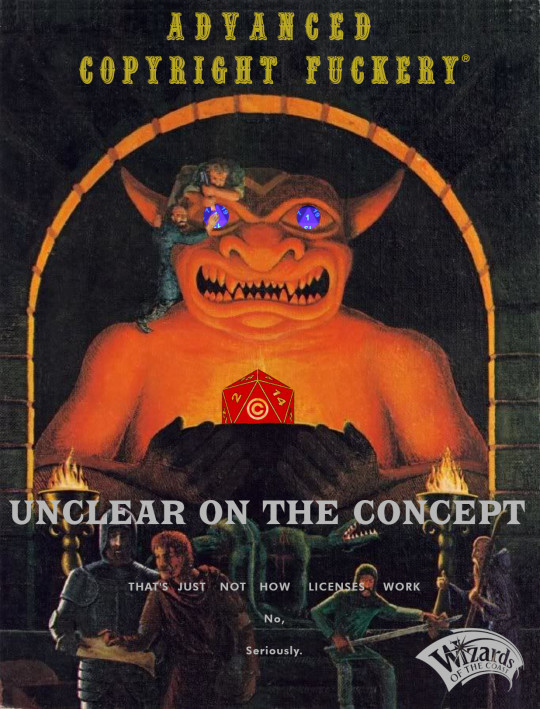
Last week, Gizmodo’s Linda Codega caught a fantastic scoop — a leaked report of Hasbro’s plan to revoke the decades-old Open Gaming License, which subsidiary Wizards Of the Coast promulgated as an allegedly open sandbox for people seeking to extend, remix or improve Dungeons and Dragons:
https://gizmodo.com/dnd-wizards-of-the-coast-ogl-1-1-open-gaming-license-1849950634
The report set off a shitstorm among D&D fans and the broader TTRPG community — not just because it was evidence of yet more enshittification of D&D by a faceless corporate monopolist, but because Hasbro was seemingly poised to take back the commons that RPG players and designers had built over decades, having taken WOTC and the OGL at their word.
Gamers were right to be worried. Giant companies love to rugpull their fans, tempting them into a commons with lofty promises of a system that we will all have a stake in, using the fans for unpaid creative labor, then enclosing the fans’ work and selling it back to them. It’s a tale as old as CDDB and Disgracenote:
https://en.wikipedia.org/wiki/CDDB#History
(Disclosure: I am a long-serving volunteer board-member for MetaBrainz, which maintains MusicBrainz, a free, open, community-managed and transparent alternative to Gracenote, explicitly designed to resist the kind of commons-stealing enclosure that led to the CDDB debacle.)
https://musicbrainz.org/
Free/open licenses were invented specifically to prevent this kind of fuckery. First there was the GPL and its successor software licenses, then Creative Commons and its own successors. One important factor in these licenses: they contain the word “irrevocable.” That means that if you build on licensed content, you don’t have to worry about having the license yanked out from under you later. It’s rugproof.
Now, the OGL does not contain the word “irrevocable.” Rather, the OGL is “perpetual.” To a layperson, these two terms may seem interchangeable, but this is one of those fine lawerly distinctions that trip up normies all the time. In lawyerspeak, a “perpetual” license is one whose revocation doesn’t come automatically after a certain time (unlike, say, a one-year car-lease, which automatically terminates at the end of the year). Unless a license is “irrevocable,” the licensor can terminate it whenever they want to.
This is exactly the kind of thing that trips up people who roll their own licenses, and people who trust those licenses. The OGL predates the Creative Commons licenses, but it neatly illustrates the problem with letting corporate lawyers — rather than public-interest nonprofits — unleash “open” licenses on an unsuspecting, legally unsophisticated audience.
The perpetual/irrevocable switcheroo is the least of the problems with the OGL. As Rob Bodine— an actual lawyer, as well as a dice lawyer — wrote back in 2019, the OGL is a grossly defective instrument that is significantly worse than useless.
https://gsllcblog.com/2019/08/26/part3ogl/
The issue lies with what the OGL actually licenses. Decades of copyright maximalism has convinced millions of people that anything you can imagine is “intellectual property,” and that this is indistinguishable from real property, which means that no one can use it without your permission.
The copyrightpilling of the world sets people up for all kinds of scams, because copyright just doesn’t work like that. This wholly erroneous view of copyright grooms normies to be suckers for every sharp grifter who comes along promising that everything imaginable is property-in-waiting (remember SpiceDAO?):
https://onezero.medium.com/crypto-copyright-bdf24f48bf99
Copyright is a lot more complex than “anything you can imagine is your property and that means no one else can use it.” For starters, copyright draws a fundamental distinction between ideas and expression. Copyright does not apply to ideas — the idea, say, of elves and dwarves and such running around a dungeon, killing monsters. That is emphatically not copyrightable.
Copyright also doesn’t cover abstract systems or methods — like, say, a game whose dice-tables follow well-established mathematical formulae to create a “balanced” system for combat and adventuring. Anyone can make one of these, including by copying, improving or modifying an existing one that someone else made. That’s what “uncopyrightable” means.
Finally, there are the exceptions and limitations to copyright — things that you are allowed to do with copyrighted work, without first seeking permission from the creator or copyright’s proprietor. The best-known exception is US law is fair use, a complex doctrine that is often incorrectly characterized as turning on “four factors” that determine whether a use is fair or not.
In reality, the four factors are a starting point that courts are allowed and encouraged to consider when determining the fairness of a use, but some of the most consequential fair use cases in Supreme Court history flunk one, several, or even all of the four factors (for example, the Betamax decision that legalized VCRs in 1984, which fails all four).
Beyond fair use, there are other exceptions and limitations, like the di minimis exemption that allows for incidental uses of tiny fragments of copyrighted work without permission, even if those uses are not fair use. Copyright, in other words, is “fact-intensive,” and there are many ways you can legally use a copyrighted work without a license.
Which brings me back to the OGL, and what, specifically, it licenses. The OGL is a license that only grants you permission to use the things that WOTC can’t copyright — “the game mechanic [including] the methods, procedures, processes and routines.” In other words, the OGL gives you permission to use things you don’t need permission to use.
But maybe the OGL grants you permission to use more things, beyond those things you’re allowed to use anyway? Nope. The OGL specifically exempts:
Product and product line names, logos and identifying marks including trade dress; artifacts; creatures characters; stories, storylines, plots, thematic elements, dialogue, incidents, language, artwork, symbols, designs, depictions, likenesses, formats, poses, concepts, themes and graphic, photographic and other visual or audio representations; names and descriptions of characters, spells, enchantments, personalities, teams, personas, likenesses and special abilities; places, locations, environments, creatures, equipment, magical or supernatural abilities or effects, logos, symbols, or graphic designs; and any other trademark or registered trademark…
Now, there are places where the uncopyrightable parts of D&D mingle with the copyrightable parts, and there’s a legal term for this: merger. Merger came up for gamers in 2018, when the provocateur Robert Hovden got the US Copyright Office to certify copyright in a Magic: The Gathering deck:
https://pluralistic.net/2021/08/14/angels-and-demons/#owning-culture
If you want to learn more about merger, you need to study up on Kregos and Eckes, which are beautifully explained in the “Open Intellectual Property Casebook,” a free resource created by Jennifer Jenkins and James Boyle:
https://web.law.duke.edu/cspd/openip/#q01
Jenkins and Boyle explicitly created their open casebook as an answer to another act of enclosure: a greedy textbook publisher cornered the market on IP textbook and charged every law student — and everyone curious about the law — $200 to learn about merger and other doctrines.
As EFF Senior Staff Attorney Kit Walsh writes in her must-read analysis of the OGL, this means “the only benefit that OGL offers, legally, is that you can copy verbatim some descriptions of some elements that otherwise might arguably rise to the level of copyrightability.”
https://www.eff.org/deeplinks/2023/01/beware-gifts-dragons-how-dds-open-gaming-license-may-have-become-trap-creators
But like I said, it’s not just that the OGL fails to give you rights — it actually takes away rights you already have to D&D. That’s because — as Walsh points out — fair use and the other copyright limitations and exceptions give you rights to use D&D content, but the OGL is a contract whereby you surrender those rights, promising only to use D&D stuff according to WOTC’s explicit wishes.
“For example, absent this agreement, you have a legal right to create a work using noncopyrightable elements of D&D or making fair use of copyrightable elements and to say that that work is compatible with Dungeons and Dragons. In many contexts you also have the right to use the logo to name the game (something called “nominative fair use” in trademark law). You can certainly use some of the language, concepts, themes, descriptions, and so forth. Accepting this license almost certainly means signing away rights to use these elements. Like Sauron’s rings of power, the gift of the OGL came with strings attached.”
And here’s where it starts to get interesting. Since the OGL launched in 2000, a huge proportion of game designers have agreed to its terms, tricked into signing away their rights. If Hasbro does go through with canceling the OGL, it will release those game designers from the shitty, deceptive OGL.
According to the leaks, the new OGL is even worse than the original versions — but you don’t have to take those terms! Notwithstanding the fact that the OGL says that “using…Open Game Content” means that you accede to the license terms, that is just not how contracts work.
Walsh: “Contracts require an offer, acceptance, and some kind of value in exchange, called ‘consideration.’ If you sell a game, you are inviting the reader to play it, full stop. Any additional obligations require more than a rote assertion.”
“For someone who wants to make a game that is similar mechanically to Dungeons and Dragons, and even announce that the game is compatible with Dungeons and Dragons, it has always been more advantageous as a matter of law to ignore the OGL.”
Walsh finishes her analysis by pointing to some good licenses, like the GPL and Creative Commons, “written to serve the interests of creative communities, rather than a corporation.” Many open communities — like the programmers who created GNU/Linux, or the music fans who created Musicbrainz, were formed after outrageous acts of enclosure by greedy corporations.
If you’re a game designer who was pissed off because the OGL was getting ganked — and if you’re even more pissed off now that you’ve discovered that the OGL was a piece of shit all along — there’s a lesson there. The OGL tricked a generation of designers into thinking they were building on a commons. They weren’t — but they could.
This is a great moment to start — or contribute to — real open gaming content, licensed under standard, universal licenses like Creative Commons. Rolling your own license has always been a bad idea, comparable to rolling your own encryption in the annals of ways-to-fuck-up-your-own-life-and-the-lives-of-many-others. There is an opportunity here — Hasbro unintentionally proved that gamers want to collaborate on shared gaming systems.
That’s the true lesson here: if you want a commons, you’re not alone. You’ve got company, like Kit Walsh herself, who happens to be a brilliant game-designer who won a Nebula Award for her game “Thirsty Sword Lesbians”:
https://evilhat.com/product/thirsty-sword-lesbians/
[Image ID: A remixed version of David Trampier's 'Eye of Moloch,' the cover of the first edition of the AD&D Player's Handbook. It has been altered so the title reads 'Advanced Copyright Fuckery. Unclear on the Concept. That's Just Not How Licenses Work. No, Seriously.' The eyes of the idol have been replaced by D20s displaying a critical fail '1.' Its chest bears another D20 whose showing face is a copyright symbol.]
#pluralistic#copyfraud#wizards of the coast#wotc#dungeons and dragons#d&d#ogl#open gaming license#eff#fair use#kit walsh#consideration#licenses
8K notes
·
View notes
Note
hi! have you seen the TTRPGS for Palestine bundle yet? and do you have any recommendations from it
https://tiltify.com/@jesthehuman/ttrpgs-for-palestine
THEME: TTRPGS for Palestine
The TTRPGs for Palestine Bundle is going from April 12 to May 7, so there's not much time left to get it, but here's some recommendations of some really awesome games that you can find in it.



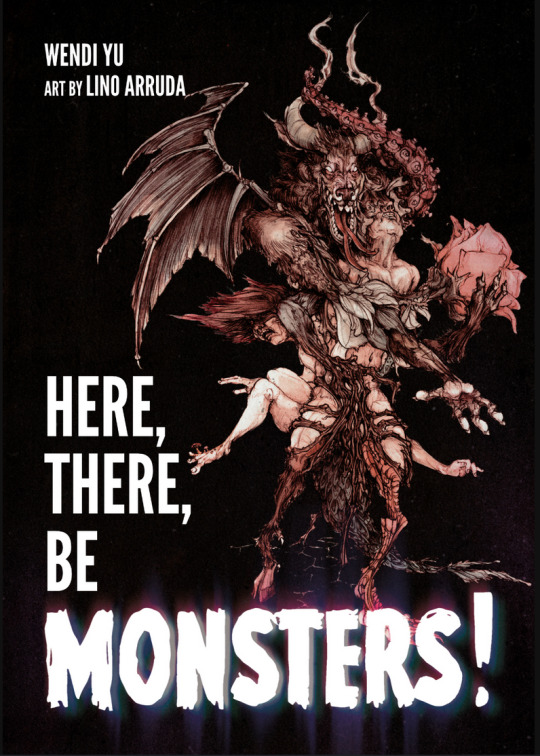



Gubat Banwa, by makapatag.
GUBAT BANWA is a Martial Arts Tactics and War Drama Tabletop RPG where you play as martial artists poised to change the world: Kadungganan: the cavalry, the wandering swordsmen, the tide turners, the knights-errant, the ones to call in darkest night in a world inspired and centering Southeast Asian folklore.
Witness, grand warriors, honorable gallants that trudge and toil under kings and haloes. Witness, KADUNGGANAN, that refulgent name. That blasted name: WITNESS NOW. The end of days is upon us: and the new world MUST BE BORN. Bear your blades, incant your magicks. Cut open your tomorrow from the womb of violence. Inscribe your name upon the very akasha of this world.
Gubat Banwa is designed for fans of 4th edition D&D, with in-depth character abilities that make you feel both unique and powerful, in a colourful and flavourful world full of vibrant cultures and clashing conflicts. The game uses an action economy with different action options carrying different weights, which also reminds me quite a bit of Lancer. If you want a game that pushes you to strategize with your friends and weigh your advancement options carefully, you want Gubat Banwa.
Gun & Slinger, by Nevyn Holmes.
GUN&SLINGER is an RPG geared for short, episodic sessions about a weapon and a wanderer. A Maestro and two players (Gun and Slinger) set out into a dead planet mutated by a god's forgotten child and hunt strange bounties, investigate the world and unlock hidden powers. During play, they seek to learn the nature of what’s hunting the Slinger, figure out why the Gun is sentient and discover how the world died.
This game is specifically for three players, using the rules of Go Fish as a resolution system. Gun & Slinger is all about using your resources to the best of their ability, and your resources might exist on your character sheet, but they also exist as cards in your hand.
What really intrigues me is the lore that’s baked into your character sheets. One of you is a wanderer in a twisted world, tempted by strange powers that guarantee to change you into a monster. One of you is a sentient magical gun, borne by that wanderer and designed to deliver death and pain.
Gun & Slinger has expansions included, allowing you to instead play as a wanderer possessed by a demon, a mech and a pilot fused as one, or someone who bears a cursed sword. I think the fact that it requires a small table and the fact that the characters’ lives are tied together makes this a high-stakes, terribly intimate game.
Apocalypse Frame, by Binary Star Games.
In a ruined and terraformed world where most of humanity is under the yoke of a brutal regime, the former workers of a once-remote factory - now known as The Collective - have risen up to create a future of freedom from oppression. You are an Ace - a highly skilled pilot referred from a Division in The Collective and assigned a humanoid combat vehicle known as a Frame. You and your Strike Team of fellow Aces must take on The Collective’s greatest threats, ensure its survival, and carve a path for its continued success.
Apocalypse Frame takes mechs and fits them into the LUMEN system, which centres competency as well as fast but effective rounds of combat. The game includes a variety of different threats, allowing you to tailor your campaign to your group’s tastes, and the tailoring doesn’t stop there. You choose both a division that your character belongs to, and then one of three mechs within that division, allowing players to share similar fighting styles but differ in weapons. You can also modify your basic frame, adding general modular systems alongside systems and armaments that can come with your mech, making character creation and progression exciting for folks who love tweaking and tailoring to their heart’s content.
If you’re a fan of Armored Core or Battletech, you’ll want to check out Apocalypse Frame.
Here, There Be Monsters!, by wendi yu.
No matter what they tell you, there’s still weirdness and wonder everywhere. You just have to know where to look. At the edges and cracks of ‘normal’ life we exist, we persist, and we resist: the monsters, the magicians, the anomalies, the freaks, and the outcasts. We gather in the shadows, trying our best to live our lives in a world that, when it doesn’t exactly fear or hate us, doesn't even believe in our existence.
here, there, be monsters! is a rules-lite response to monster-hunting media from the monsters' point of view. It's both a love letter and a middle finger to stuff like Hellboy (and the BPRD), the SCP Foundation, the Men in Black, the World of Darkness games and the Urban Fantasy genre in general. It is an explicitly queer, antifascist and anti-capitalist game about the monstrous and the weird, in any flavor you want, not as something to be feared, but to be cherished and protected.
Here, There, Be Monsters is a love-letter to anyone who has been made to feel monstrous, as well as an homage to media such as Hellboy, the SCP Foundation, and Men in Black. It’s urban fantasy meets organized power structures, and as the monsters, you’re here to burn those structures down.
This game uses descriptive tags to slap onto your characters to represent what they can do. You can choose from a number of different monster character backgrounds to give you guidance towards, and there’s plenty of monsters both in the base game and in the game jam wendi ran back in 2022. If you want a game of power, anti-capitalism, and punching up, this is the game for you.
Pale Dot, by Devin Nelson.
Pale Dot is a collaborative storytelling game for 2-5 players about a crew of non-human cosmonauts leaving their planet to explore a strange solar system, finding threads to unravel the unknown along the way. It is fantastical, surreal, and perhaps very unlike humanity’s own ventures in space exploration. Though one thing is universal: leaving home is terrifying, dangerous, humbling, and a catalyst for changing one’s perspective.
Pale Dot is a GM-less game where players work together to create an alien setting and subsequently envelop it in cosmic mystery, embodying cosmonauts called Dustlings, as well as one of 5 different settings. During their journey they will be able to travel to 24 different locations within their solar system, each with several prompts for improvisational scenes. Each player will also have to manage the integrity of their cosmonaut and their shared ship while avoiding space's many perils.
The cover for Pale Dot gripped me the first time I saw it; a tiny creature in an astronaut suit, looking up in fear at something in the sky, as vegetation blooms inside their helmet. You play as the Dustlings, non-human but sentient species exploring the Cosmos, a strange, horrifying and wonderful universe that changes those who venture into it.
Mechanically, Pale Dot uses a GM-less structure similar to Dream Askew, but there feels to be a much bigger emphasis on the setting your cosmonauts explore, rather than the cosmonauts themselves. Your characters are assembled traits, drives and equipment, almost all of which can be expended to cause or solve problems. Each player is also responsible for at least one setting element, such as The Cosmic Wilderness, The Wondrous Endeavour, or The Omnipresent Danger. As you visit locations, different elements will be prompted to influence the scene, while your cosmonauts try to navigate the scene and try to finish the mission. If you want a game that is collaborative and evocative, I definitely recommend Pale Dot.
Fractal Romance, by Ostrichmonkey Games.
A never ending abstract landscape of rhythm and soft glamour. Wander the halls, rooms, and chambers. Encounter strange Denizens and get to know them better; befriend them, fall in love, just chill. Try and fill out your own blurred edges.
Fractal Romance is a tabletop role playing hangout. You will pick up a character to play and explore the Fractal Palace, generating its infinite sprawl and the Denizens that inhabit it, as you play.
Fractal Romance is all about searching; for something you need, something you want, or even for who you are. It feels rather surreal, perhaps like a dream dimension that you are moving through. The game uses a deck of cards to generate rooms, as well as the denizens of this gigantic, dream-like palace. This game uses rather simplistic playbooks, each asking you to choose three descriptive words, and then uses cards to fuel your character’s actions: you have things you can always do, things that cost a card to do, and things that you must do in order to draw another card.
If what you want out of a game is a chill time with friends, moving from one vibe to another, and generating emotional stories for your characters, you might want to check out Fractal Romance.
Himbos of Myth and Mettle, by huge boar.
You are big. Big arms, big tits, big thighs, big brai- you're big where it matters. In addition to a heaving, throbbing body, glistening lightly with a thin sheen of pleasantly fragrant perspirant, you have one singular unifying trait - come hell or high water, you are going to help.
Himbos of Myth & Mettle is a high fantasy, high camp role playing game of epic proportions (of body), for 2-5 players, one of whom will act as Game Guide. The rules center around a simple roll under mechanic and prioritize narrative flair and cinematic descriptions. Himbos is inspired by many classic fantasy properties (and could be considered OSR adjacent) , but leans towards a more garish, salacious and queer (gay or odd, pick your fighter) style of play. It is designed with comedy and flamboyance in mind, but is not without it deeper and darker touches. It's definitely not grimdark, but there will probably be blood. Think classic fantasy pulp in style, but contemporary sensibilities, modern rules-lite mechanics, and a player philosophy centred in helping, kindness and being fucking hot.
I’ve heard rave reviews for Himbos, and I think the idea of leading an entire group of well-meaning but possibly over-ambitious adventurers is a great set-up for a game full of laughs. Himbos is very much designed for a light-hearted evening of fun, flirting, and fucking up (but in the best way).
Other Games from the Bundle I've Recommended:
Space Taxi, and Creation Myths, by GothHoblin.
Caltrop Core, by Titanomachy.
Souvenirs, by Rémi Töötätä.
Thunder in Our Hearts, by Marn. S.
Eldritch Courts of Some Repute, by AlanofAllTrades.
578 notes
·
View notes
Text
I’m releasing a TTRPG supplement

Kind of says it all, really.
Brought to life by the illustrations of the talented Kate Lucas (https://skeejeedoodles.carrd.co/), the supplement is on sale now at:
https://hyrune.itch.io/the-goblin-market
Hey folks. My name is David, I’m a queer games designer and writer from Ireland. In the autumn of last year, I was made redundant from my job of eleven years, and taking a look back over that time I realised I’d lost time. I’d lost so much creative spark that previously drove me, and in a fit of frenzied, caffeine-fuelled panic inspiration, I got to work making something.
I’ve been playing tabletop RPGs for many years, both as a GM and as a player. As a GM, I’ve occasionally struggled when players go off the beaten track - you haven’t lived until you’ve stared blankly around the table, trying to think of a name for a random NPC you didn’t anticipate at all, having your eyes land on a coffee cup and proudly declaring their name is “Uhhhh... Muggsley.”
If you’ve ever been in a position where your players are shopping, and you’ve had to quickly drum up a string of shopkeepers and vendors on-the-fly, this book might just help you. The Goblin Market is a system agnostic collection of over fifty merchants, monsters and even stranger things which can be dropped into your campaign to add weirdness and magic for your players: retired river gods, escaped nightmares, tea merchants, vengeful dragons seeking to raise an army to defeat tyrannical princesses, off-duty demons, magical roboticists, mystery cults, accidentally immortal witches, and more besides.
Each entry details a merchant and the items they both buy and sell, but also contains a number of plot hooks (over 140, last time I checked) so you can give your players sidequests to investigate. Each vendor can be dropped into your game on their own, but also exists in a setting of their own - a setting where each market stallholder invokes and involves other entries and merchants as rivals, romantic interests, family members and possible eldritch accomplices from the days before the Moon was born. It’s a living, breathing place, and I’ve loved writing it so, so much.
2K notes
·
View notes
Note
What's OSR? I've seen you mention it several times in your RPG posts. Is it like a genre of rpg or...?
Hey, sorry I took so long to reply to this lol you probably already just googled it by now.
But like. Anyway.
OSR (Old-School Revival, Old-School Renaissance, and more uncommonly Old-School Rules or Old-School Revolution, no one can really agree on what the R means) is less like a genre and more like a movement or a loosely connected community that seeks to capture the tone, feel and/or playstyle of 70's and 80's fantasy roleplaying games (with a particular emphasis on old-school editions of Dungeons and Dragons, particularly the Basic D&D line but pretty much anything before 3e falls under this umbrella), or at least an idealized version of what people remember those games felt like to play.
There isn't exactly a consensus on what makes a game OSR but here's my personal list of things that I find to be common motifs in OSR game design and GM philosophy. Not every game in the movement features all of these things, but must certainly feature a few of them.
Rulings over rules: most OSR games lack mechanically codified rules for a lot of the actions that in modern D&D (and games influenced by it) would be covered by a skill system. Rather that try to have rules applicable for every situation, these games often have somewhat barebones rules, with the expectation that when a player tries to do something not covered by them the GM will have to make a ruling about it or negotiate a dice roll that feels fair (a common resolution system for this type of situation is d20 roll-under vs a stat that feels relevant, a d6 roll with x-in-6 chance to succeed, or just adjudicating the outcome based on how the player describes their actions)
"The solution is not on your character sheet": Related to the point above, the lack of character skills means that very few problems can be solved by saying "I roll [skill]". E.g. Looking for traps in an OSR game will look less like "I rolled 18 on my perception check" and more like "I poke the flagstones ahead with a stick to check if they're pressure plates" with maybe the GM asking for a roll or a saving throw if you do end up triggering a trap.
High lethality: Characters are squishy, and generally die much more easily. But conversely, character creation is often very quick, so if your character dies you can usually be playing again in minutes as long as there's a decent chance to integrate your new PC into the game.
Lack of emphasis on encounter balance: It's not uncommon for the PCs to find themselves way out of their depth, with encounters where they're almost guaranteed to lose unless they run away or find a creative way to stack the deck in their favor.
Combat as a failure state: Due to the two points above, not every encounter is meant to be fought, as doing so is generally not worth the risk and likely to end up badly. Players a generally better off finding ways to circumvent encounters through sneaking around them, outsmarting them, or out-maneauvering them, fighting only when there's no other option or when they've taken steps to make sure the battle is fought on their terms (e.g. luring enemies into traps or environmental hazards, stuff like that)
Emphasis on inventory and items: As skills, class features and character builds are less significant than in modern D&D (or sometimes outright nonexistent), a large part of the way the players engage with the world instead revolves around what they carry and how they use it. A lot of these games have you randomly roll your starting inventory, and often this will become as much a significant part of your character as your class is, even with seemingly useless clutter items. E.g. a hand mirror can become an invaluable tool for peeping around corners and doorways. This kind of gameplay techncially possible on modern D&D but in OSR games it's often vital.
Gold for XP: somewhat related to the above, in many of these games your XP will be determined by how much treasure you gather, casting players in the role and mindset of trasure hutners, grave robbers, etc.
Situations, not plots: This is more of a GM culture thing than an intrinsic feature of the games, but OSR campaigns will often eschew the long-form GM-authored Epic narrative that has become the norm since the late AD&D 2e era, in favor of a more sandbox-y "here's an initial situation, it's up to you what you do with it" style. This means that you probably won't be getting elaborate scenes plotted out sessions in advance to tie into your backstory and character arc, but it also means increased player agency, casting the GM in the role of less of a plot writer or narrator and more of a referee.
Like I said, these are not universal, and a lot of games that fall under the OSR umbrella will eschew some or most of these (it's very common for a lot of games to drop the gold-for-xp thing in favor of a different reawrd structure), but IMO they're a good baseline for understanding common features of the movement as a whole.
Of course, the OSR movement covers A LOT of different games, which I'd classify in the following categories by how much they deviate from their source of inspiration:
Retroclones are basically recreations of the ruleset of older D&D editions but without the D&D trademark, sometimes with a new coat of paint. E.g. OSRIC and For Gold and Glory are clones of AD&D (1e and 2e respectively); Whitebox and Fantastic Medieval Campaigns are recreations of the original 1974 white box D&D release; Old School Essentials, Basic Fantasy and Labyrinth Lord are clones of the 1981 B/X D&D set. Some of these recreate the original rules as-is, editing the text or reorganizing the information to be clearer but otherwise leaving the meachnics unchanged, while others will make slight rules changes to remove quirks that have come to be considered annoying in hindsight, some of them might mix and match features from different editions, but otherwise they're mostly straight up recreations of old-school D&D releases.
There are games that I would call "old-school compatible", that feature significant enough mechanical changes from old-school D&D to be considered a different game, but try to maintain mechanical compatibility with materials made for it. Games like The Black Hack, Knave, Macchiato Monsters, Dungeon Reavers, Whitehack, etc. play very differently from old-school D&D, and from each other, but you generally can grab any module made for any pre-3e D&D edition and run it with any of them with very little to no effort needed in conversion.
There's a third category that I wouldn't know how to call. Some people call then Nu-OSR or NSR (short for New School revolution) while a small minority of people argue that they aren't really part of the OSR movement but instead their own thing. I've personally taken to calling them "Old School Baroque". These are games that try to replicate different aspects of the tone and feel of old-school fantasy roleplaying games while borrowing few to none mechanics from them and not making any particular attempts to be mechanically compatible. Games like Into the Odd, Mörk Borg, Troika!, a dungeon game, FLEE, DURF, Songbirds, Mausritter, bastards, Cairn, Sledgehammer, and too many more to name. In my opinion this subsection of the OSR space is where it gets interesting, as there's so many different ways people try to recreate that old-school flavor with different mechanics.
(Of course, not everything fits neatly into these, e.g. I would consider stuff like Dungeon Crawl Classics to be somewhere inbetween category 1 and 2, and stuff like GloG or RELIC to be somewhere imbetween categories 2 and 3)
The OSR movement does have its ugly side, as it's to be expected by the fact that a huge part of the driving force behind it is nostalgia. Some people might be in it because it harkens back to a spirit of DIY and player agency that has been lost in traditional fantasy roleplaying games, but it's udneniable that some people are also in it because for them it harkens back to a time before "D&D went woke" when tabletop roleplaying was considered a hobby primarily for and by white men. That being said... generally those types of guys keep to themselves in their own little circlejerk, and it's pretty easy to find OSR spaces that are progressive and have a sinificant number of queer, POC, and marginalized creators.
211 notes
·
View notes
Text
i think one of the most telling examples of how we’ve been influenced to think about gaster is that if we say no to him after he asks if we want to continue after a chapter 1 game over, we’ll proceed to hear the absolute gentlest most heartbroken fucking unaccompanied piano arrangement of gaster’s motif any of us has ever heard and we’ll still be like "huh wonder why THAT’S there."
it’s because he’s sad!!! he’s fucking sad!!! this is the sound of an incorporeal man holding back metaphysical tears!!! WHY would the game have us linger here at a black screen instead of immediately going back to the menu like a normal RPG would? because it wants us to have this quiet moment in the dark with him, to finally catch him in a moment that’s raw and deeply vulnerable and unmarred by either cryptic mythologizing or his own mask of confident, neutral professionalism, just a black screen and a tender, melancholic song. and then he closes the fucking game himself.
it’s like, after narrating our ending, he just can’t think of anything else to say. he doesn’t want to tell us to go away because he probably doesn’t want us to, we’re both his last hope for success and the only person he’s been able to "connect" with in a very long time. he just sits there awkwardly with us while he quietly processes the situation, before he finally accepts that this is the world’s (and his) fate and he can’t force us to stay there with him any longer.
again im not trying to woobify him, what im saying is that we’re so used to seeking out spooky, vaguely sinister lore for an extraplanar entity that even when we finally meet him, it doesn’t occur to us that he could just be another character, one who’s VERY different from the other characters but a character nonetheless.
gaster is fundamentally cryptic and ambiguous, possibly in part because he intends to be hard to read. i think he hides himself between layers and behind clinical speech and trees because he’s uncomfortable with being seen, but he isn’t a perfect rational being, he’s just a guy, and he can’t connect with us without risking "pieces" of himself seeping through. just as undertale challenged us to hunt through it for pieces of gaster’s lore, deltarune is now going out of its way to give us insight into his character, but just as with his lore, we have to seek it out and consider it carefully in order to learn anything. like do you understand why im suddenly so obsessed with this guy!!! not to mention all the ways he parallels kris and chara and alphys and serves as a reflection of the player and. god. i love these fucking video james so much
2K notes
·
View notes
Text
youtube
Shin Megami Tensei V: Vengeance - Announce Trailer
youtube
Japanese version
youtube
Extended Cut
youtube
Extended Cut Japanese version
youtube
Special Program Spotlight
Shin Megami Tensei V: Vengeance will launch for PlayStation 5, Xbox Series X|S, PlayStation 4, Xbox One, Nintendo Switch, and PC (Steam, Microsoft Store) on June 21, 2024 worldwide. Pre-orders will open on February 27, 2024.
Shin Megami Tensei V: Vengeance is an enhanced version of Shin Megami Tensei V, which originally launched for Nintendo Switch in November 2021.
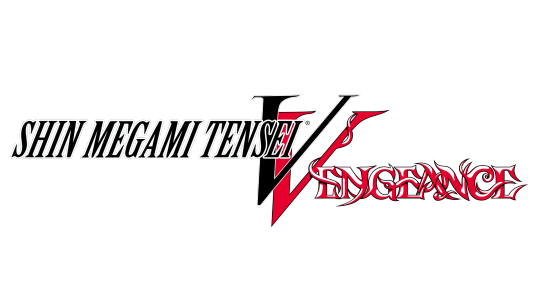
Title logo

Key visual
Overview
The latest title in the series, Shin Megami Tensei V: Vengeance allows players to enjoy the story of Shin Megami Tensei V in its entirety, with a new story path, untold in the original. Massively expanded with new areas, demons, and music, Shin Megami Tensei V: Vengeance features more accessible gameplay, an improved battle system, new demon experiences, and greater field exploration.
Pre-orders for the Nintendo Switch family of systems (physical only), PlayStation 5, PlayStation 4, Steam, Xbox Series X|S, Xbox One and PC will begin on February 27, 2024. Details on digital pre-orders for Nintendo Switch will be announced at a later date.
When a grisly murder scene in modern-day Tokyo blocks the protagonist’s walk home, an unplanned detour leaves him buried and unconscious. He finds himself in a wasteland ravaged by apocalypse now called Da’at. Before bloodthirsty demons can claim his life, a savior emerges, and they unite to become a mighty being, neither human nor demon: a Nahobino.
Shin Megami Tensei V: Vengeance delivers a full-fledged RPG that can be enjoyed by existing and new fans. At the start of the game, players will choose between two paths: the story told in Shin Megami Tensei V, the Canon of Creation, or the brand-new Canon of Vengeance. This dramatic new tale of revenge introduces brand-new characters, an enigmatic cohort of demons called the Qadištu, a new dungeon and map to explore. Additionally, the original Shin Megami Tensei V battle system, demon merging and field exploration have been evolved and expanded in this newest entry in the series.
Further details
■ What is Shin Megami Tensei V: Vengeance?
Released in 2021, ATLUS’s renowned RPG Shin Megami Tensei V has sold more than one million copies worldwide.
This highly acclaimed game has evolved in every aspect, including the system and scenario, and will be available on multiple modern platforms!
At the beginning of the story, the player is presented between two routes. The story told in Shin Megami Tensei V, the Canon of Creation, and a brand-new route, Canon of Vengeance, a dramatic tale of revenge by the fallen.
The Canon of Vengeance follows the scenario of SMTV, but changes drastically from the latter half of the game. The outcome will be completely different. Enjoy the two divergent stories to your heart’s content.
The battle system, demon fusion, and field exploration have also evolved in depth with the addition of new elements. We are excited to deliver a full-fledged RPG that can be enjoyed by those who have already played SMTV, as well as those who are playing this series for the first time.
■ Story
Thou shalt be God—.
When a grisly murder scence in modern-day Tokyo blocks our protagonist’s walk home, an unplanned detour leaves him buried and unconscious. He awakens in a New Tokyo, a wasteland ravaged by apocalypse now called Da’at – but before bloodthirsty demons can claim his live, a savior emerges, and the two of them unite to become a mighty being, neither human nor demon: a Nahobino.

Revenge Awaits—.
Demons attack humans and seek to create a world of chaos.
Bethel, an organization that seeks to protect God’s order.
Caught up in the conflict between the two, while exploring Da’at, the protagonist meets and starts traveling with Yoko Hiromine.
Using magic, Yoko and the main character stand together on the front line.
The Qadistu, four female Demons stand in their way. “Found it, the Key of Resurrection…” A member of the Qadistu, Lilith calls protagonist the Key of Resurrection, and herself The Oppressed.
What is their purpose? A tale of revenge by the oppressed begins.
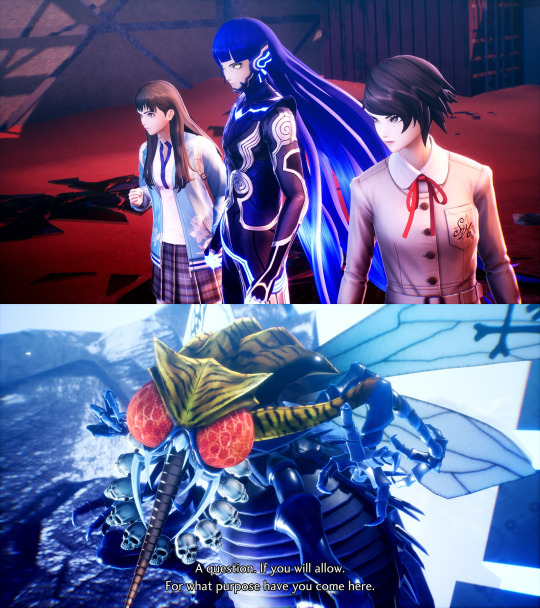
■ The Oppressed: The Qadistu
In the Canon of Vengeance, four female demons appear in front of the protagonist. Another story of creation told by new Demons.

■ Characters
Lilith (voiced by Katelyn Gault in English, Atsuko Tanaka in Japanese)
“I am Lilith of the Qadištu The one to restore the world to what it ought to be.”

A woman who is said to have been Adam’s first wife in the Old Testament. Later left Garden of Eden and turned into a demon.
Leader of the Qadištu. In order to achieve an unidentified goal, she stands in front of the protagonist.
Protagonist / Nahobino
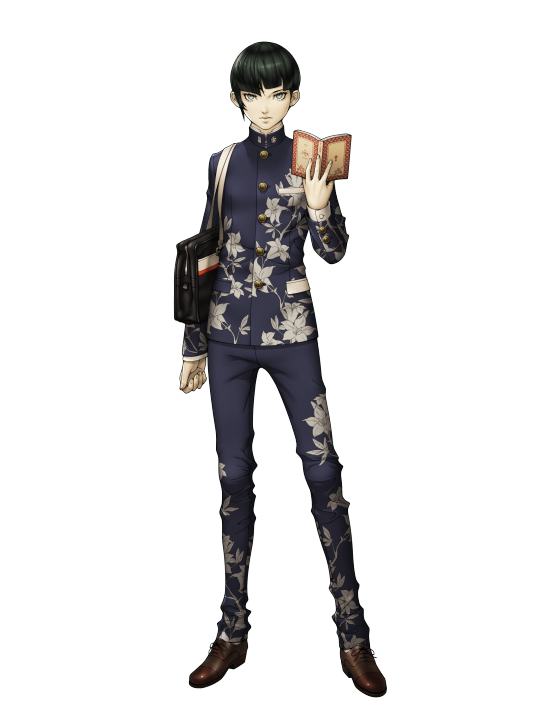
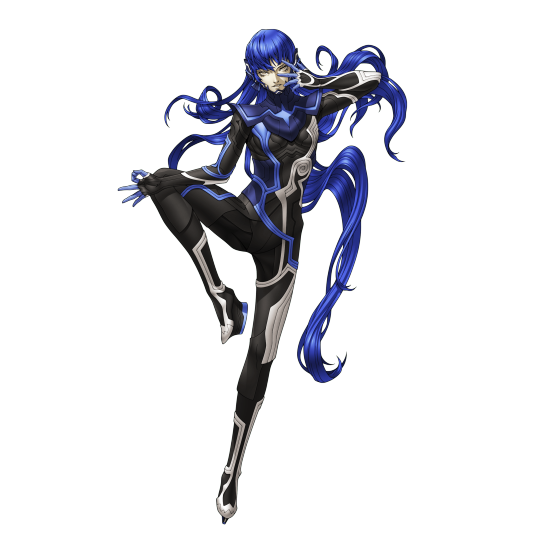
A high school senior living in Tokyo. On his way back from school, he is involved in a tunnel collapse and wanders into an apocalyptic version of Tokyo, Da’at. His hobby is reading.
The protagonist fuses with Aogami and becomes a “Nahobino,” using this power to fight back demons.
The decision-making during the Nahobino state lies with the protagonist, and Aogami guides him with his voice.

Aogami (voiced by Damian Mills in English, Toshiyuki Morikawa in Japanese)
“Regardless of what may happen, rest assured that I will always protect you.”

A mysterious man who appears before the protagonist, who is being attacked by a demon in Da’at.
By taking the protagonist’s hand, he transforms into a condemned being, the Nahobino.
He seemingly participated in the war 18 years ago, but his memory of it has slipped away.

Yoko Hiromine (voiced by Erin Yvette in English, Chiwa Saitou in Japanese)
“With no one to save them, in the back of their mind, the victim desires only one thing: revenge against the assailant.”
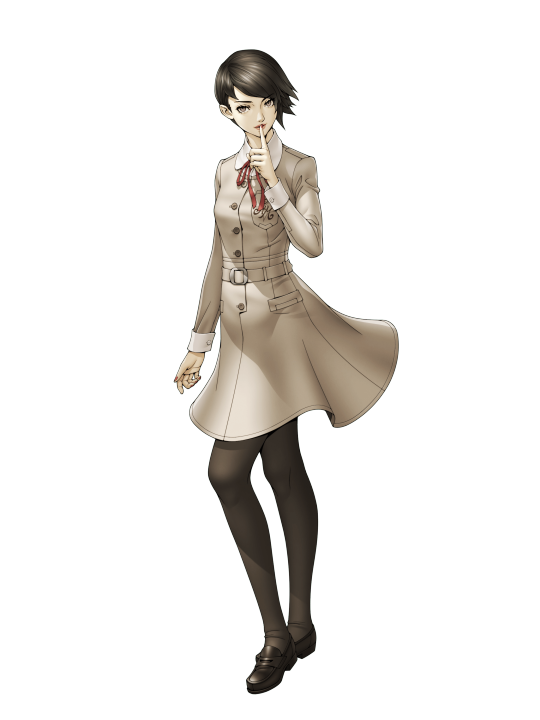
She is a senior in high school at St. Marina Academy. Cool and somewhat mysterious.
She meets and works with the protagonist in Da’at. She has always possessed mysterious powers and was once called a “saint”. At the academy, she has been recognized for her power and learned exorcism magic. She also participates in the battles.

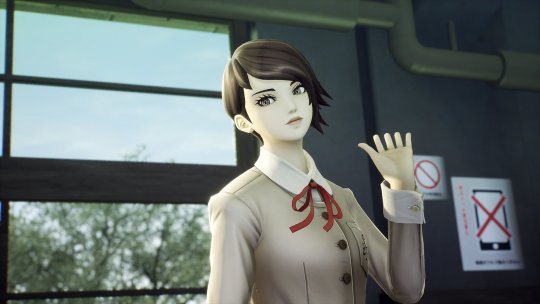
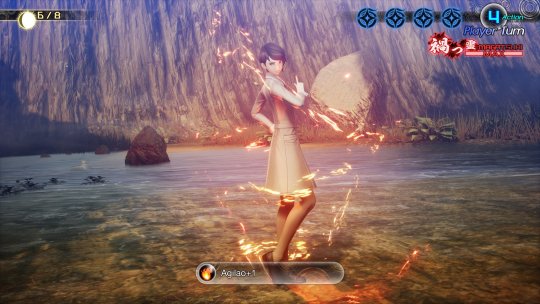
■ Over 270 Demons
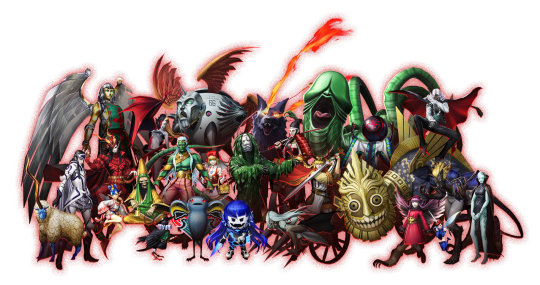
In addition to existing demons, this title features more than 270 demons, including new demons newly drawn by the character designer Masayuki Doi. Enjoy an incredible demon experience!
■ Includes Shin Megami Tensei V Downloadable Content Demons and Quests!
The demons and quests that were available with Shin Megami Tensei V are included in this title as standard features! Experienced players are encouraged to try their hand at these challenging quests.
“A Goddess in Training”
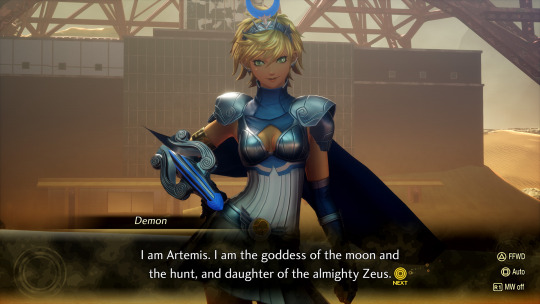
“The Rage of a Queen”
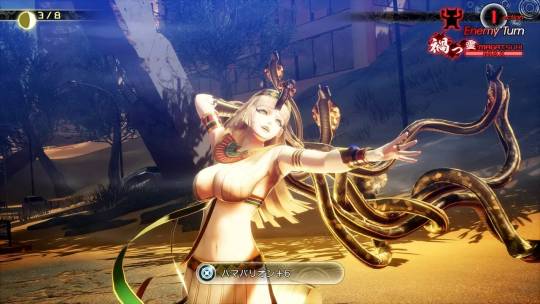
“The Doctor’s Last Wish”
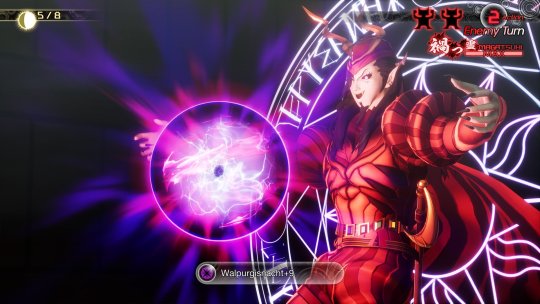
“Return of the True Demon”

■ Evolution in Depth!
Every system of Shin Megami Tensei V has been brushed up in detail and new elements have been added, including field exploration, demon conversations, battles, growth elements, and new demon experiences! Of course, with multiple endings—this is truly the definitive version of Shin Megami Tensei V.
Adding unique skills to all demons, new interactions with demons, and more… Many other new elements! Stay tuned for more information!
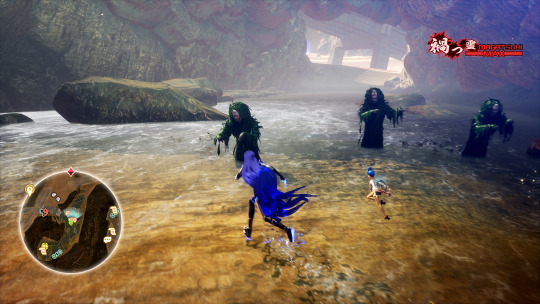
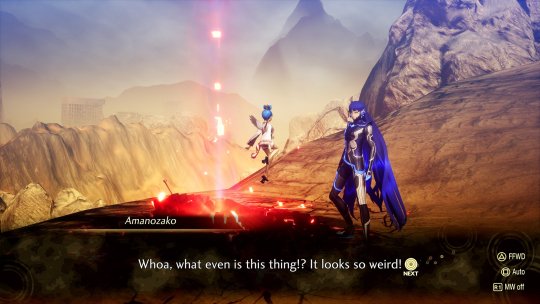

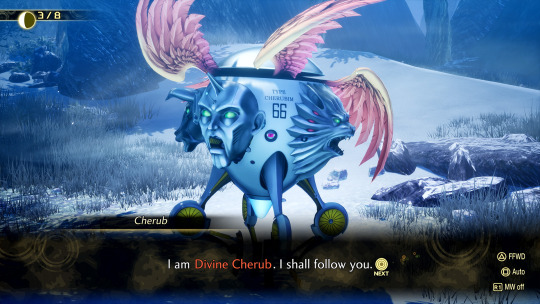

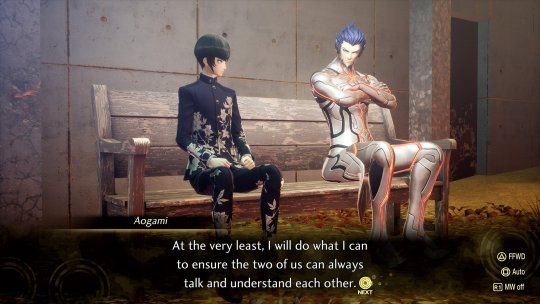
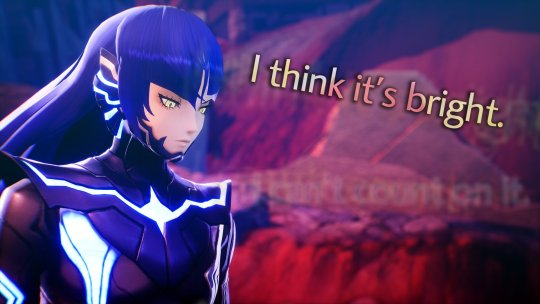
■ Additional Downloadable Content
Downloadable content featuring new demons will be distributed simultaneously on the release date.
Demon God Dagda from Shin Megami Tensei IV: Final and newly introduced is the demon Goddess Konohanasakuya, newly drawn by character designer Masayuki Doi!
Holy Will and Profane Dissent
When the protagonist goes to investigate a mysterious reaction, he meets Danu, the earth mother goddess, who claims to have come from a world that exists in another universe. Danu is apparently searching for his son, Dagda. The protagonist embarks on a search for Dagda with Danu. By completing the game, Dagda can be made an ally, and fusion will be unlocked.
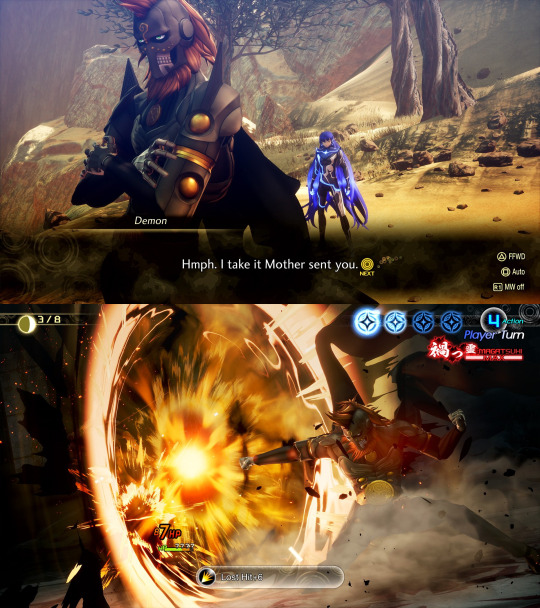
Sakura Cinders of the East
Konohana Sakuya laments the turbulent world and searches for a hero who can pacify the world. She sees an image of a certain hero within the protagonist and challenges him. Winning the battle will allow you to make Konohana Sakuya your ally, and fusion will also be unlocked.
In addition, earning downloadable content that makes it easier to gain experience and in-game currency will be released at the same time.
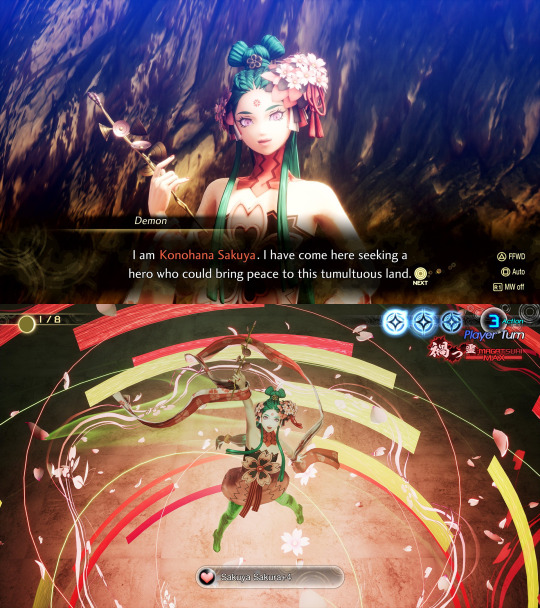
#Shin Megami Tensei V Vengeance#SMTVV#Shin Megami Tensei 5 Vengeance#SMT5V#Shin Megami Tensei V#SMTV#Shin Megami Tensei 5#SMT5#Shin Megami Tensei#SMT#Megaten#Atlus#video game#Nintendo Switch#PlayStation 5#PlayStation 4#Xbox Series#Xbox Series X#Xbox One#PC#Steam#Microsoft Store
101 notes
·
View notes
Text
HOLY SHIT INVISIBLE SUN IS COMING BACK AND IT'S MY FAVORITE RPG OF ALL TIME PLEASE BACK IT SO I (or we, I guess) CAN GET THE WELLSPRING:
https://www.backerkit.com/c/projects/monte-cook-games/invisible-sun-return-of-the-black-cube#top
For those of you unfamiliar with Invisible Sun, it's an rpg where every single player is a spell caster of some variety, each with their own unique way of interacting with magic.
The Vances are the most traditional spellcasters, but they eschew spell lists in favor of literally filling a grid with spell cards, representing their limited cognitive space being taken up by spells. They get more space, and literally bigger spells as you progress.
Weavers take two concepts and combine them to produce an effect, very much like Ars Magica or Mage: The Ascension, if you're familiar with those. They get the ability to combine more concepts together, and to have mastery over more concepts as they progress.
Makers are this game's artificer, and they have a robust system for making quirky magic items that have fun, interesting, unique side effects or downsides every time you use them. Their progression is the most straight forward by the numbers "the things you make are more powerful and you're better at making them" of the bunch, but the system lets you, for instance, make a gun out of the body of a dead(?) god, so I'll give this a pass.
Lastly, there are the Goetics, who summon and bind otherworldly creatures to their wills. This takes the form of a conversation and negotiation with your GM over what you have to do for your bound creature, and what exactly they do for you in exchange. If you've ever played a warlock and felt like patrons weren't a big enough deal, this is an entire "class" that lets those relationships (yes, plural) take center stage.
The entire system feels very much like Cypher system 2.0, with a d10 dice pool system with a straight forward level of difficulty to hit, very much like the levels of difficulty in base cypher system, just made easier to manage. It even uses the "I'm an Adjective Noun who Verbs" character structure from Cypher system, here made much more interesting by the addition of a funky little xp system.
Invisible Sun has one of the most interesting advancement systems I've ever seen: aside from normal, average, "you do a thing, you get xp" system, here called "Acumen" (used to increase your stats and skills) there is a separate xp system related to good and bad things happening to your character, called "Joy" and "Despair" respectively. You combine one Joy with one Despair to get a "Crux" which is the xp currency you need to advance your class and focus abilities. This incentivizes players to not only let bad things happen to them, but to SEEK THEM OUT, which is huge! Players often think they want to win all the time, but they don't actually want that, it makes for a boring narrative. This is one of the very few systems I've seen incentivize this story structure, and I'm absolutely in love with it.
Lastly, because the game focuses so heavily on Magic, it has the only system for simulating the ebbs and flows of magic I've seen done well! This involves "The Path of Suns" and the "Sooth deck" which is the in game name for a specific pattern of laying out what amounts to tarot cards that make magic dynamic, interesting, and unpredictable in a way I've never seen before, and rarely since. (Pathfinder's Secrets of Magic is the only other supplement I can think of, and that was almost 5 years after this game came out)
Anyway, I can't recommend this game enough, the systems are unique, the vibes are immaculate, and it's so fuckin WEIRD in the best way.
#ttrpgs#indie ttrpg#ttrpg#indie games#rpg#tabletop#invisible sun#monte cook games#mcg#cypher system#magic#magic system
165 notes
·
View notes
Note
More Hadeon lore?? I love them sm
aaaa i love to talk about my dumb babies dont give me any excuse..
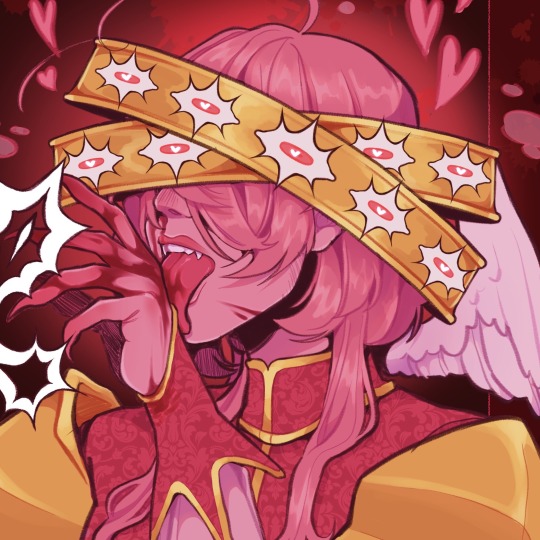
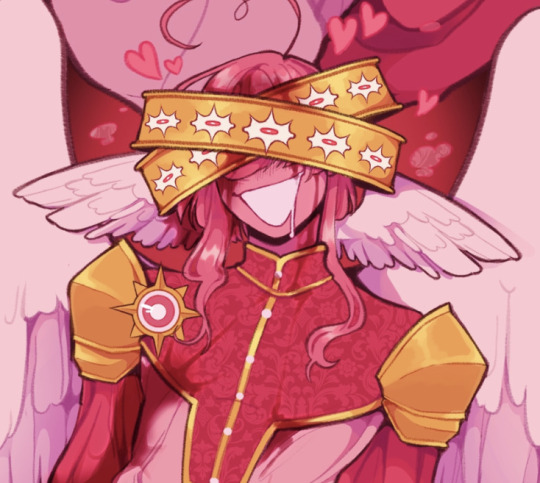

She’s actually part of like. a whole Thing. which i will now ramble about for ENTIRELY too long, so ill put it under the cut
ahhh im so bad at explaining things even tho theres like. a lot of lore & worldbuilding (by my standards anyways)
but basically all of my angel & demon OCs are part of an idea i have for an rpg/ttrpg?? set in a world where God, angels and demons all exist in the world, mainly in a sort of eldritch sense. God has essentially gone missing for thousands of years - with only scattered miracles to occasionally make Its presence known - and in Its absence, the angels have taken on their own warped interpretation of Its edict while the demons have wreaked havoc, and both have entwined themselves very heavily into human society (mostly to humanity’s detriment).
The players would create a character (human((religious, cult, or agnostic)), fallen angel, redemption demon, etc) that would give them certain skill sets/abilities/affinities depending on their choices, but the overall goal of the game is to Meet/Find God (and your characters reason for this would vary)
The continent in the game is basically one enormous mountain range, with the peaks actually reaching the heavens (think like olympus) with those living closer to the peaks being basically ultra religious societies who still believe God is there and everything that happens is still somehow part of Its plan, and those at the base and few small surrounding islands (which deal with much more demonic corruption and angelic attacks) doubting It still exists, and becoming home to fringe groups of cults creating their own deities (sometimes literally) and agnostics.
Players would meet somewhere at the base and progress up the mountain, and - depending on their group make-up - meet angels and demons along the way, both of which could potentially be foes or allies.
The angels exist in a hierarchy, with the seven Seraphim at the top, but almost all of them pose a potential danger. With God no longer at the reigns, the angels have had centuries to interpret Its will however they see fit. Many of the lowest ranking angels still hold the original ideals and are mostly harmless, granting blessings and offering sage advice, but are of no Real help. Of the higher ranking angels, many have gained their own twisted sort of moral compass and have lost touch with Gods original love for mankind. What is or isn’t a sin, what deserves punishment or what deserves blessing, has become subjective to them and they bestow their judgment upon mankind with great prejudice.
The demons exist in a hierarchy as well. As angels stripped of their holy power (and thus blinded) when they attempted to overthrow God, they seek to earn back their power and sight by stealing souls. The harder to corrupt a soul is, the more power they obtain when that soul finally succumbs. Lower level/weaker demons mainly seek to cause wide spread devastation and death, as they dont have the power to corrupt, but feed on any souls lost. Higher level demons are more insidious, possessing or manipulating people in power, in search of “higher quality” souls to assist their climb.
There are also a small group of “fallen” angels and “redeemed” demons, who exist sort of outside of the status-quo since they no longer fit neatly into either group. Fallen angels are (usually lower ranking) angels that have fallen in love with humanity and rejected their base angelic nature to live amongst them. They forfeit most of their angelic power and assume a more human-like appearance in order to live amongst the humans they adore, but have a still-perceivable “otherness” that leaves them mostly an outcast. Redemption demons are somewhat similar; they have gained/retained enough love for humanity since their fall that they no longer seek to claim human souls for power and are instead attempting to regain Gods love through redemption and acts of kindness. Falling from heaven has irrevocably changed them physically, however, and they face great hardships attempting to fit in to human society.
Of the Seraphim, Hadeon represents the Wrath of God. He is tasked with finding and punishing sinners, those who would blaspheme or turn against God. Originally she was the fair hand of Justice, but in the centuries of Gods absence, his sense of right and wrong have become irrevocably warped. Their presence can first be felt with the smell of ozone, and a sudden intense pressure, like a storm on the horizon. She, and the army of angels under her command, hunt sinners through the streets, meting out their vigilante justice. Where he goes, indescriminate bloodshed almost always follows.
Her mindset is entirely black and white, but despite eons walking the earth they retain a naïveté of human society that makes her pretty easily distractable. He can occasionally be reasoned with and/or distracted, and even more rarely convinced to bestow a blessing.
Hadeon is one of the first Minor bosses the player faces, and your decision to either befriend, escape, or kill her will play a role in your later encounter with other higher angels.
obviously there are all of the other Seraphim, and other high ranking demons that have their own names/info/etc i could literally keep going on and on abt them & more in depth world building forever probably but i will stop now 😔
#this is technically an old anon but. i want to talk about my dumb worldbuilding so now u all have to look at it ty💖💖💖#asks#my art#oc#oc: hadeon#if any of u actually read all of that i owe u my first born child or smthn fjfjfj
141 notes
·
View notes
Text
kickstarter

Wilderfeast is an RPG about becoming part of the natural world by making it part of you.
Players assume the role of “wilders”: monster hunters/chefs who wield gargantuan kitchen implements and gain powerful mutations from each monster they eat. Using those powers, they seek harmony between humanity and the wild.
All creatures, be they humans or monsters, obey the One Law of the One Land…


In Wilderfeast, players take on the role of the mutated rangers who roam the land trying to stop the frenzy, an eldritch virus which makes kaiju-esque monsters violent and self-destructive before leaping to stronger hosts.

Gameplay alternates between Journeys (high-intensity, travel and combat) and Downtime (low-intensity, rest and roleplay). In both phases, you resolve conflicts with a simple but flexible dice pool system, built around a central idea…
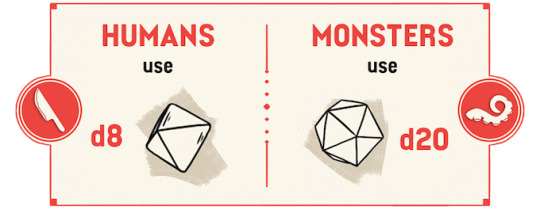
Wilders are both, so they can choose which of their sides to embrace when taking Tests: will you focus up, and stay true to your human side, or go wild, and unleash the monster in you?


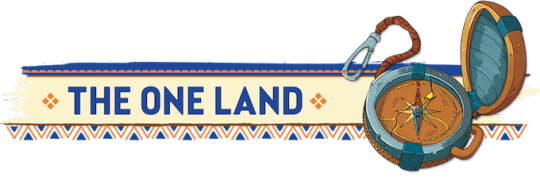
The world of Wilderfeast is the One Land - a post-post-apocalyptic supercontinent, both familiar and fantastic, beautiful and harsh, where food is magic.
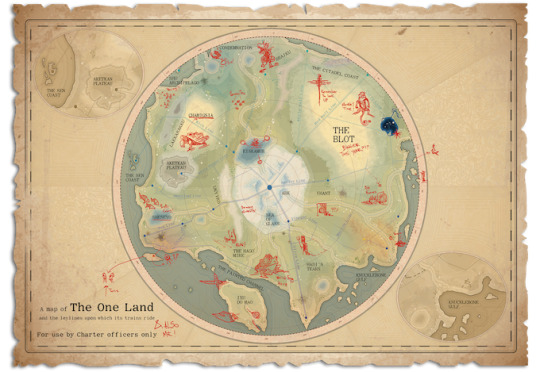
The One Land is vast, wild, and old. It’s populated by humans and monsters, extraordinary creatures who take inspiration from paleontology, cryptozoology, and works like Monster Hunter and Godzilla.
The One Land is also vulnerable. Humans, relative newcomers here, have unleashed the frenzy, an eldritch virus which makes coexistence between humanity and the creatures everyday more difficult.
The One Land is not an easy place to live. It is littered with both the bones of extinct species and the ruins of fallen civilizations. But after each apocalypse, something new and green grows from the ashes.

Wilderfeast’s system is fast, customizable and easy to learn.
All creatures, both humans and monsters, have these attributes:
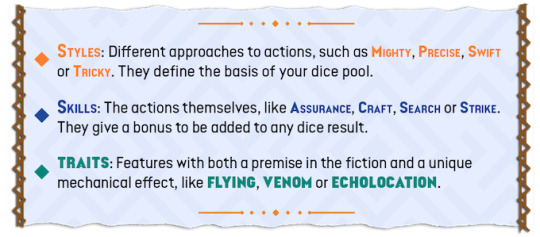
When something’s at stake, you roll a Test. Every Test combines a Style with a Skill, such as a Mighty Call to intimidate a monster into backing away or a Swift Search to follow tracks in the undergrowth.
Wilderfeast has a simple but flexible dice pool system. The mechanics are built around a central idea: humans use d8s and monsters use d20s. Wilders are both human and monstrous, and they can switch between these dice sizes.
To build your dice pool, gather a number of d6s equal to your level in the Test’s Style (such as “Mighty”, “Precise”, “Swift” or Tricky”). These are called your Style Dice. Every 5+ on your Style dice grants you a Success on the Test.
Then, add your Action Dice, which determines the quality of the Success you eventually achieved. Humans use a d8 for their Action Die, while monsters use a d20. However, wilders are both. During this step, you choose which side of yourself to embrace.
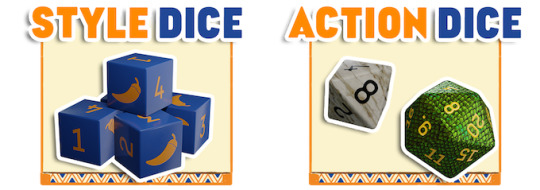
If you focus up, you stay true to your human side: add a d8 Action Die to your dice pool. This option is consistent and reliable.
If you go wild, you embrace your monster side: choose one of your Traits and describe how it helps you in this situation. Then, remove 1 Style Die and replace it with a d20 Action Die. This is risky, as it lowers your overall chance of success, but it could make your action an order of magnitude more effective. Now, roll your dice pool for a Test.

Tests create a spectrum of results beyond binary success and failure. The range of choices when making Tests also accommodates different playstyles. You can aim for big numbers, deep strategies, and tactical play. Or you can get creative and add details to the fiction.


Wilders are the ones most capable of stopping the spiral of fear and death that’s consuming the One Land. They’re not a formal order: some look like cavemen, others like wandering knights. Each is free to decide how to take on the job, but they all share some common attributes:
Each wilder has a Tool, enormous kitchen implements to produce mind-boggling amounts of food. Wilders repurposed those artifacts as weapons, though they still come in handy as cooking aids. There are 6 Tools in total (Cleaver, Pan, Mitts, Spit, Torch and Twine), and they define a wilder’s “class”: your training, disposition, and approach to being a wilder.
Each wilder has a Specialty, which corresponds to one of the monstrous lineages. Your choice of Specialty indicates your character’s expertise in both hunting and caring for members of that lineage. There are eight Specialties in total, like Roaster, Fisher, Butcher or Gardener.
Each wilder has a three-course Background. Your backstory, initiation and drive, framed through food: what meal defined your childhood? What meal made you a wilder? What meal do you crave the most?
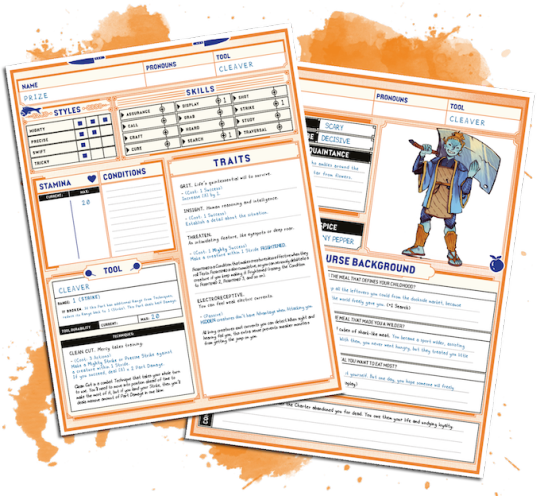
These mutated rangers work in packs and have taken on the duty to stop the frenzy. Packs are free to decide both what harmony with nature means and how they hope to achieve it. For example, bounty-packs resemble the grizzled mercenaries of The Witcher, while free-packs evoke the wolf-raised warrior of Princess Mononoke.
As a wilder, what path will you walk?

The One Land’s ecosystems are original, but not alien. All monsters celebrate and exaggerate the features of real animals, from dinosaurs to dogs. Their supernatural abilities are grounded in the struggles they face to survive. A breath-taking variety of creatures that share this world with humans and wilders: 30+ different creatures, each with its own Traits, body Parts and Behavior that make every hunt different.
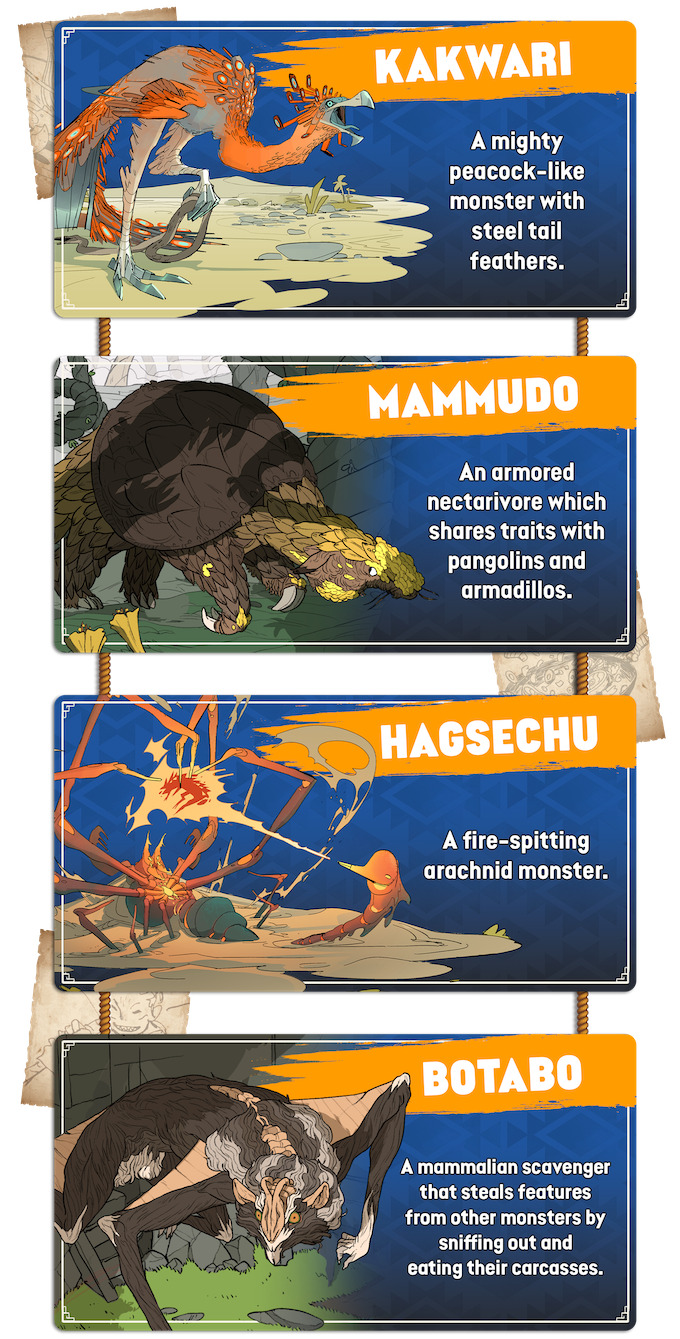

Wilderfeast features a modern and versatile style of combat that blends puzzle-solving thrills and fast-paced action strategy. Every pack of Wilders can take a different approach to the Hunt: will you split in groups and attract the monster’s fury to expose its weak spots, or will you growl at its face and go full frontal?
Each creature gains 3 Actions at the start of their turn during combat, which they can spend on the following Activities, each with a variable cost:

Combat orbits around the Monster, so you measure all distance in combat using Strides. Wilders spend combat between 0 Strides, where you’re right on top of the Monster, and 4 Strides, where you just barely register as a threat.
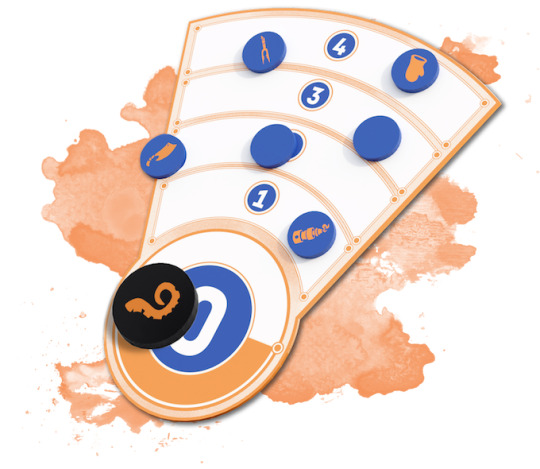
This number represents the distance you’re maintaining, not your static position. At all times during a hunt, you’re circling the Monster, chasing after it, or driving it toward more favorable terrain. Two wilders who are the same number of Strides from the Monster could either be right next to each other or on opposite sides of it, but that’s intentional. Moving around or with the Monster is automatic; moving towards or away from it takes effort.

The iconic meals of the wilders combine the roughness of campfire cooking with the ceremony of a holiday festival. These wilderfeasts are celebration and mourning, all wrapped up in one. During this phase, you clean, prepare, and cook the Monster where it fell, turning it into a meal that honors its legacy and gives you strength. In doing so, you learn about it. The more you know about the Monster, the better informed your decision when you choose what mutation to inherit: after you eat The Feast, choose a Style, Skill, or Trait in which the Monster has more levels than you do, or which you don’t have at all. You permanently gain a level in that Style, Skill, or Trait.
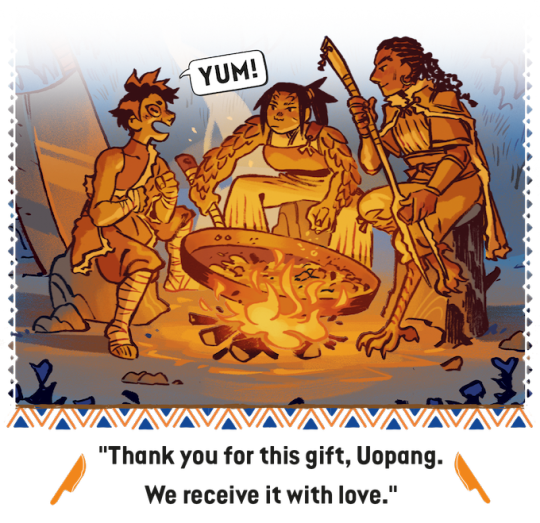

Not every meal gives such dramatic mutations as a wilderfeast, but food is always magic in the One Land, even the most casual of snacks. Before setting out on the road, a merchant eats a meal full of hardy greens to give them the endurance for a day of travel; a guard, beginning their shift in a watchtower, chews on raptor jerky to sharpen their eyesight; a student brews tea with a night-blooming flower so they can stay up late studying. The changes caused by these meals are subtle and temporary, and they're woven into the fabric of everyday life.
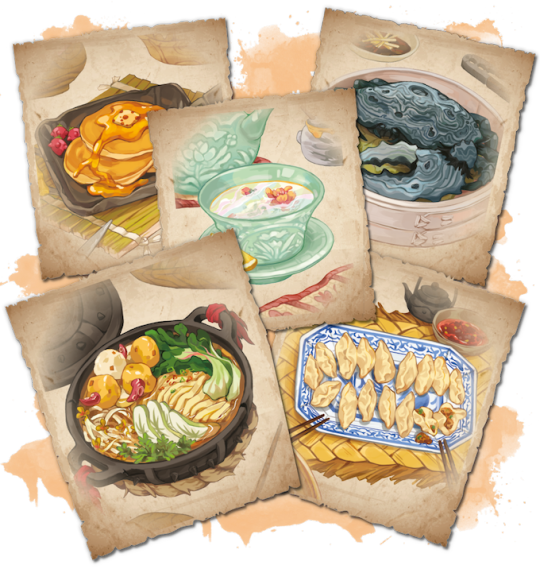
When you have a cooking opportunity, such as when you Camp during your Journeys, you and your packmates can make a meal. To cook, you select Ingredients, determine how much Stamina the meal restores (typically 1 for each Ingredient used), and determine the meal’s effect, choosing among those of the Ingredients you used.
These meals can either be served fresh or saved for later and turned into Snacks (so that you can consume a portion when you need to restore Stamina or trigger other effects but you don’t have the time to stop and cook). Once you’ve cooked the meal, be sure to describe it! Tell everyone enough about the dish’s flavor, textures, or appearance that they can taste it in their head.

Wilderfeast is a letter-sized, hardcover book of 250+ pages, with full-color art throughout. It includes:
Fast and robust character creation, with 6 Tools (each with their own set of unlockable Traits), 8 Specialties, and suggestions for your three-course backstory. No matter how you build your character, you start with connections to the One Land and your fellow players.
Streamlined and accessible rules for each phase of the game.
A Bestiary with 30+ monsters, each with their own art, stats, and ecological information.
A travel guide, exploring the One Land and the Sen Coast, with detailed maps and extensive tables of cooking ingredients.
The Last Chamig, a set of four standalone scenarios also playable as an overarching campaign. These accessible and easy to set up scenarios are designed to introduce Guides and Wilders to the game system and come with full-detailed maps, stat blocks, pregenerated characters, an a set-list of events. The pitches for each chapter of The Last Chamig will be revealed over the course of the Kickstarter campaign!
Essential advice for running the game, including recommended safety tools, tips for creating your own monsters and regions, and player-empowering mechanics to help the group define the adventures they want to have. Do you want to steward the wild, get stronger, protect your community, or explore ruins from the ancient past?
==============================
Kickstarter campaign ends: Tue, September 26 2023 10:59 PM BST
Website: [Horrible Guild] [facebook] [twitter] [instagram]
156 notes
·
View notes
Text
Have you play GUN & SLINGER ?
By Nevyn Holmes
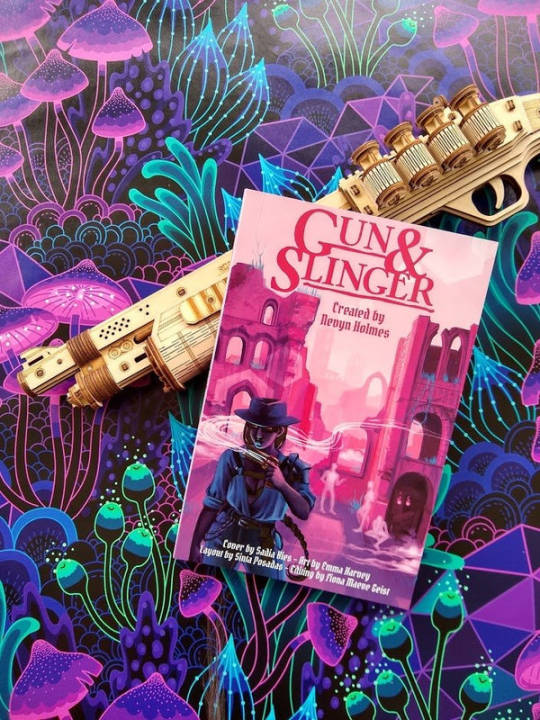
GUN&SLINGER is an RPG geared for short, episodic sessions about a weapon and a wanderer. A Maestro and two players (Gun and Slinger) set out into a dead planet mutated by a god's forgotten child and hunt strange bounties, investigate the world and unlock hidden powers. During play, they seek to learn the nature of what’s hunting the Slinger, figure out why the Gun is sentient and discover how the world died.
59 notes
·
View notes
Text
Shin Megami Tensei V: Vengeance announced for PS5, Xbox Series, PS4, Xbox One, Switch, and PC - Gematsu
From Gematsu

ATLUS has announced Shin Megami Tensei V: Vengeance for PlayStation 5, Xbox Series, PlayStation 4, Xbox One, Switch, and PC (Steam, Microsoft Store). It will launch on June 21 worldwide. Pre-orders will open on February 27.
Shin Megami Tensei V: Vengeance is an enhanced version of Shin Megami Tensei V, which originally launched for Switch in November 2021.
Here is an overview of the game, via ATLUS:
The latest title in the series, Shin Megami Tensei V: Vengeance allows players to enjoy the story of Shin Megami Tensei V in its entirety, with a new story path, untold in the original. Massively expanded with new areas, demons, and music, Shin Megami Tensei V: Vengeance features more accessible gameplay, an improved battle system, new demon experiences, and greater field exploration.
Pre-orders for the Nintendo Switch family of systems (physical only), PlayStation 5, PlayStation 4, Steam, Xbox Series X|S, Xbox One and PC will begin on February 27, 2024. Details on digital pre-orders for Nintendo Switch will be announced at a later date.
When a grisly murder scene in modern-day Tokyo blocks the protagonist’s walk home, an unplanned detour leaves him buried and unconscious. He finds himself in a wasteland ravaged by apocalypse now called Da’at. Before bloodthirsty demons can claim his life, a savior emerges, and they unite to become a mighty being, neither human nor demon: a Nahobino.
Shin Megami Tensei V: Vengeance delivers a full-fledged RPG that can be enjoyed by existing and new fans. At the start of the game, players will choose between two paths: the story told in Shin Megami Tensei V, the Canon of Creation, or the brand-new Canon of Vengeance. This dramatic new tale of revenge introduces brand-new characters, an enigmatic cohort of demons called the Qadištu, a new dungeon and map to explore. Additionally, the original Shin Megami Tensei V battle system, demon merging and field exploration have been evolved and expanded in this newest entry in the series.
And here are further details:
■ What is Shin Megami Tensei V: Vengeance?
Released in 2021, ATLUS’s renowned RPG Shin Megami Tensei V has sold more than one million copies worldwide.
This highly acclaimed game has evolved in every aspect, including the system and scenario, and will be available on multiple modern platforms!
At the beginning of the story, the player is presented between two routes. The story told in Shin Megami Tensei V, the Canon of Creation, and a brand-new route, Canon of Vengeance, a dramatic tale of revenge by the fallen.
The Canon of Vengeance follows the scenario of SMTV, but changes drastically from the latter half of the game. The outcome will be completely different. Enjoy the two divergent stories to your heart’s content.
The battle system, demon fusion, and field exploration have also evolved in depth with the addition of new elements. We are excited to deliver a full-fledged RPG that can be enjoyed by those who have already played SMTV, as well as those who are playing this series for the first time.
■ Story
Thou shalt be God—.
When a grisly murder scence in modern-day Tokyo blocks our protagonist’s walk home, an unplanned detour leaves him buried and unconscious. He awakens in a New Tokyo, a wasteland ravaged by apocalypse now called Da’at – but before bloodthirsty demons can claim his live, a savior emerges, and the two of them unite to become a mighty being, neither human nor demon: a Nahobino.
Revenge Awaits—.
Demons attack humans and seek to create a world of chaos.
Bethel, an organization that seeks to protect God’s order.
Caught up in the conflict between the two, while exploring Da’at, the protagonist meets and starts traveling with Yoko Hiromine.
Using magic, Yoko and the main character stand together on the front line.
The Qadistu, four female Demons stand in their way. “Found it, the Key of Resurrection…” A member of the Qadistu, Lilith calls protagonist the Key of Resurrection, and herself The Oppressed.
What is their purpose? A tale of revenge by the oppressed begins.
■ The Oppressed: The Qadistu
In the Canon of Vengeance, four female demons appear in front of the protagonist. Another story of creation told by new Demons.
■ Characters
Lilith (voiced by Katelyn Gault in English)
“I am Lilith of the Qadištu The one to restore the world to what it ought to be.”
A woman who is said to have been Adam’s first wife in the Old Testament. Later left Garden of Eden and turned into a demon.
Leader of the Qadištu. In order to achieve an unidentified goal, she stands in front of the protagonist.
Protagonist / Nahobino
A high school senior living in Tokyo. On his way back from school, he is involved in a tunnel collapse and wanders into an apocalyptic version of Tokyo, Da’at. His hobby is reading.
The protagonist fuses with Aogami and becomes a “Nahobino,” using this power to fight back demons.
The decision-making during the Nahobino state lies with the protagonist, and Aogami guides him with his voice.
Aogami (voiced by Damian Mills in English)
“Regardless of what may happen, rest assured that I will always protect you.”
A mysterious man who appears before the protagonist, who is being attacked by a demon in Da’at.
By taking the protagonist’s hand, he transforms into a condemned being, the Nahobino.
He seemingly participated in the war 18 years ago, but his memory of it has slipped away.
Yoko Hiromine (vocied by Erin Yvette in English)
“With no one to save them, in the back of their mind, the victim desires only one thing: revenge against the assailant.”
She is a senior in high school at St. Marina Academy. Cool and somewhat mysterious.
She meets and works with the protagonist in Da’at. She has always possessed mysterious powers and was once called a “saint”. At the academy, she has been recognized for her power and learned exorcism magic. She also participates in the battles.
■ Over 270 Demons
In addition to existing demons, this title features more than 270 demons, including new demons newly drawn by the character designer Masayuki Doi. Enjoy an incredible demon experience!
■ Includes Shin Megami Tensei V Downloadable Content Demons and Quests!
The demons and quests that were available with Shin Megami Tensei V are included in this title as standard features! Experienced players are encouraged to try their hand at these challenging quests.
A Goddess in Training
The Doctor’s Last Wish
The Rage of a Queen
Return of the True Demon
■ Evolution in Depth!
Every system of Shin Megami Tensei V has been brushed up in detail and new elements have been added, including field exploration, demon conversations, battles, growth elements, and new demon experiences! Of course, with multiple endings—this is truly the definitive version of Shin Megami Tensei V.
Adding unique skills to all demons, new interactions with demons, and more… Many other new elements! Stay tuned for more information!
■ Additional Downloadable Content
Downloadable content featuring new demons will be distributed simultaneously on the release date.
Demon God Dagda from Shin Megami Tensei IV: Final and newly introduced is the demon Goddess Konohanasakuya, newly drawn by character designer Masayuki Doi!
Holy Will and Profane Dissent
When the protagonist goes to investigate a mysterious reaction, he meets Danu, the earth mother goddess, who claims to have come from a world that exists in another universe. Danu is apparently searching for his son, Dagda. The protagonist embarks on a search for Dagda with Danu. By completing the game, Dagda can be made an ally, and fusion will be unlocked.
Sakura Cinders of the East
Konohana Sakuya laments the turbulent world and searches for a hero who can pacify the world. She sees an image of a certain hero within the protagonist and challenges him. Winning the battle will allow you to make Konohana Sakuya your ally, and fusion will also be unlocked.
In addition, earning downloadable content that makes it easier to gain experience and in-game currency will be released at the same time.
Watch the announcement trailer and a special program below. View the first screenshots at the gallery.
Announce Trailer
English
youtube
Japanese
youtube
Special Program Spotlight
English
youtube
Japanese
youtube
#Shin Megami Tensei V: Vengeance#Shin Megami Tensei V#Shin Megami Tensei#SMT V#SMT#Atlus#Gematsu#Youtube#long post
69 notes
·
View notes
Note
Do you have any games that involve urban fantasy with less focus on fighting than something like Dresden or Shadowrun?
THEME: Urban Fantasy (Minimal Fighting)
Hello there! What I've got here is quite a mix, I wasn't sure how much violence you wanted (or didn't want) so I have a little bit of romance, a little bit of nostalgia, and a little bit of horror!


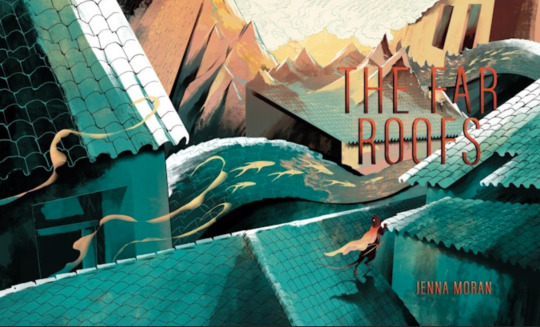

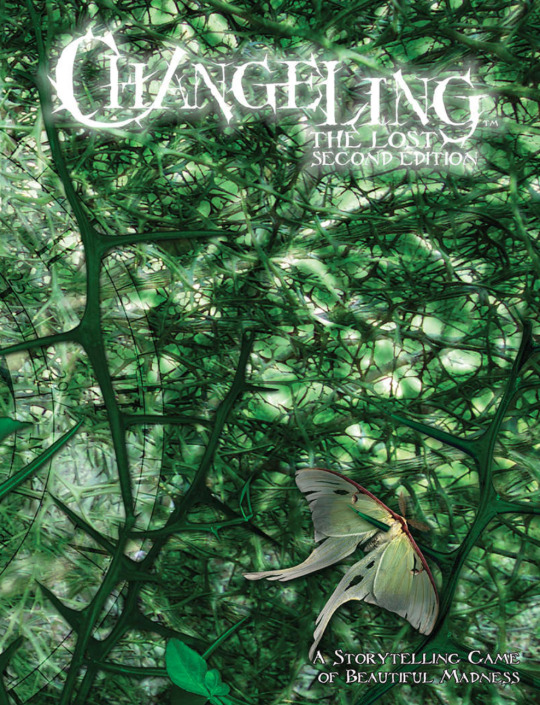

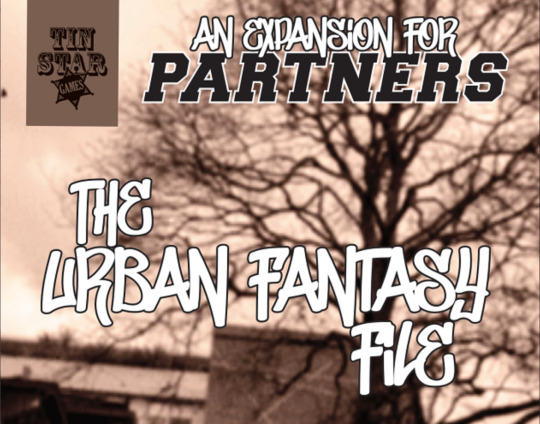

City of Mist, by Son of Oak Games.
City of Mist is a role-playing game of film-noir investigation and super-powered action. It is set in a modern metropolis rife with crime, conspiracies, and mysteries. The protagonists are Rifts, ordinary people who became the living embodiment of a legend, their Mythos. While your Rifts may seek to strike a balance between the mysterious nature of their Mythos and their mortal aspirations, the powers within them always threaten to tear their lives apart. They have unwittingly become a part of a secret world of clashing stories, and soon other legends will come looking for them with demands.
City of Mist is a combination of PbtA and FATE, giving your characters descriptive tags to use for both their benefit and their detriment as they go about solving mysteries in a supernaturally-saturated city. The primary theme of the game is mystery, and thus more than anything your characters will be primed for investigation. That’s not to say that there isn’t violence - but violence and fighting can be de-emphasized if the group is more interested in the mystery side of things.
Character Creation involves a combination of mundane and supernatural themes, as your character is endeavouring to strike a balance with the parts of themselves that they recognize (student, parent, office worker, ex-partner) and the parts of themselves that are hard to understand (mythical beast, deity, folktale, urban legend). What’s important to define is your daily routine, your personality, and what kind of supernatural powers you have.
This game isn’t explicitly anti-violent, but it absolutely provides you with ways to solve problems that aren’t violent, so I think City of Mist is worth checking out.
Scary Monsters & Nice Sprites, by Pammu.
Scary Monsters and Nice Sprites is a narrative RPG about spending your night in one of the only clubs in your city that’s safe for creatures of the night like yourself. All you want to do is have some fun just like the humans do. Play a supernatural creature of choice, put some sick EDM on the speakers and get your game on!
This game works best for an even number of players, up to 6, and is GM-less. It combines urban monsters with flirting, dark clubs and hookups. Each of your characters will look for a partner by doing things that will appeal to the other players. If they like what you do, they’ll reward you with tokens, which you can spend to improve the atmosphere of the club. Fill another player’s intimacy meter, you’ve won them over, and the two of you decide how the night ends for both of your characters.
If you want a game about flirting and the magic of a nightclub, this is your game.
The Far Roofs, by Jenna Katerin Moran.
The Far Roofs is an original role playing system and bundled campaign using pens or pencils, paper, six-sided dice, ten-sided dice, playing cards, and a bag of letter tiles. It's complete in one volume: with this one book and the equipment above, you'll have everything you need to play.
As the story progresses, your characters will gain access to over 150 unique, narrative-focused powers developed and refined over the course of a decade for the Chuubo's Marvelous Wish-Granting Engine RPG before being simplified and adapted for use herein.
The Far Roofs is still being Kickstarted, but Moran’s work on Chuubo’s Wish-Granting Engine produced a game that emphasizes wonder and emotional experience. The Far Roofs looks to deliver along the same lines, and the examples of play point towards investigation, social interaction, and magic powers. Jenna Moran is also known for her unique and evocative storytelling in her work, so I think it’s definitely worth checking out.
Lighthearted, by Kurt & Kate Potts.
Welcome to the magical 80s dream world of Lighthearted. You are a Prep, Jock, Geek, Rebel, or Outcast, like those kids in The Breakfast Club, except you are just about to start magic community college. Through play, we'll explore how you grow out of your high school cliques all while dealing with magical mishaps, college parties, vampires, and worse—finals!
Lighthearted is a complete tabletop roleplaying game that uses the language of film and television to reimagine the coming of age stories popular in 80s teen movies like Weird Science and Sixteen Candles, but with a modern fantasy spin. It's set in an alternate 1980s with fantasy elements weaved into the most outlandish bits of 80’s pop culture. There are fantasy religions mixed in with mall culture, dark magic cold wars, and magical glamours instead of plastic surgery.
This is a game of magic and coming-of-age, as you play first-year students at a magical community college. You’re off to the big city, and the big world - will you survive your first college party? Your first vampire?
The whole game feels like the neon lights of a vibrant night-life combined with the nostalgia of an 80’s film. Your magic is attached to how you feel, so as your emotions change, so will your effectiveness at certain actions. If you want a game that’s as light as its name, and you are seeking out rosy-tinted nostalgia, this might be your game.
Changeling: the Lost, by Onyx Path.
Once upon a time, they took you from your home. They promised you a place at their side, and meaning in your life, and they surrounded you with beautiful things. But the beautiful things were oh so sharp, and they laughed when you bled.
Day by day, they changed you. But day by day, your will grew stronger. On the last day, you smashed your way through the beautiful things and ran, not noticing as you bled or feeling as you cried.
You fought with courage and cleverness and took yourself home. Now the beauty and the horror are yours, to have and to hold and to live.
Welcome to once upon right fucking now.
So I’m familiar only with the 1st edition of Changeling, but as far as I understand, the setting and core premise of the game is the same in the 2nd edition. Changeling: the Lost is a game of fairy trauma. Your characters are survivors of a fae horrorscape, a place both wondrous and terrifying all at once. This game is solidly in the horror genre, but it contains within it a taste of the magical, and it’s also the reason I got into roleplaying in the first place.
As in many Chronicles of Darkness games, fighting is an option in here, but it’s not a wise option. Getting into fights pulls at your characters’ ability to understand the difference between our world and the world of Fae, it’s very easy to sustain supernatural damage that is hard to heal, and, well, sometimes it’s hard to tell who your real enemies are in the first place.
I’d say that Changeling is more of a political game than anything else. Your characters will have to dance through the highly literal wording of faerie pledges, and untangle difficult relationships between Courts that are both safe havens and potential beds of sedition. This is a violent game, but much of the violence possible in Changeling isn’t physical - it's emotional.
This Night On The Rooftops, by C.M. Ruebsaat.
This is a game about gazing out over the smokestacks after dark, with the wind in your hair and a friend at your side and a thousand lights of progress on the streets below.
This Night on the Rooftops is a collaborative storytelling game for 2-5 players about friendship, growing up, and revolution. You will play members of a gang of children in The City, a fantastic world of industry and dying magic, where witches labour alongside factory-workers to make ends meet.
This game looks slightly less modern, but it takes the fantasy aspect of witchcraft and places it inside an industrial city. The game uses a modified version of the No Dice No Masters rule set, which is excellent for stories that have an ebb and flow to them, managed through the use of token expenditure. This game is also GM-less, giving everyone at the table the same amount of control over what happens next.
Since the characters are a gang of teenage witches looking to make ends meet, this game doesn’t strike me as one that prioritizes fighting or violence. The city looks big enough to grind up the characters if they’re not careful, so they’ll likely have to find solutions to problems that don’t get them (or their dependants) in trouble. If the game is like other No Dice No Masters games that I’m familiar with, the group will also have a big say over which elements of the city are the most intriguing to them.
Partners: The Urban Fantasy File, by Tin Star Games.
Some murders are just elf defence…
Vampires are real, magic is real, elves are real - and murder is still very very real. This expansion takes you and your Partner down the moonlit streets of urban fantasy, where the dead sometimes get back up again but crime is still a mystery needing two heads to solve.
The base game for this, Partners, is a two-player mystery-solving game about a pair of detectives, a straight-shooter and a wildcard. You’ll need the base rules to play, but this supplement brings in dead elves, suspicious vampires, and other common characters in any urban fantasy genre. It can work as a one-shot, or as a series of episodes. If you want a game that's primarily about solving a mystery more than anything else, this is is for you.
Solacebound, by Sascha Moore.
Young monsters played at the boundary between the worlds. They slipped and stranded in a human city. Isolated and unwelcome, they search for each others help and a way back.
Solacebound is a GM-less Game for 3-5 people to play over a few hours. Search a sprawling, oppressive city for your friends, find out who is willing to give you a roof, bash back against authorities, cook together and console each other. Will you find a way back home before all passages close?
You are teenage monsters trying to find their way through an urban environment, in a place that is hostile to them. You survive by hiding out, finding each-other, and do things together to make sure you keep each-other healthy. Cards from a deck act as resources, but also as an oracle to help you describe the fallout of any given action, and the emotions that are attached to it. This is a game about metaphors, about what it is like to live in a place that fears you, so I definitely recommend making sure the entire table knows what this is about before starting a game.
You Might Also Want to Check Out
Subway Runners, by Gem Room Games.
186 notes
·
View notes
Text
We Don't Talk About Abdel: the ""Canon"" Gorion's Ward and Why I Hate Him
If you've only played Baldur's Gate 3 you may have heard of Abdel Adrian. The Hero of Baldur's Gate, late Grand Duke, and Bhaalspawn who died, badly.
There is, unfortunately a lot you might not know.
Spoilers ahead for the original Baldur's Gate, Baldur's Gate 2: Shadows of Amn, and Baldur's Gate 2: Throne of Bhaal. And their shitty novelizations you should not read.
Your choices matter. Allegedly.
There are many ways to handle continuity in a series of choice-heavy RPGs with custom main characters. There's the approach the original Fallout games did, by setting the second installment long enough after the first, that your player character can be vaguely alluded to without much friction. There's the Bioware approach, of uploading your save data from previous games to slightly effect the world in the next one.
And then there's the Baldur's Gate series, which splits the difference and makes the worst of both worlds: a century has past and there's no cheeky vagueness to transplant your own player character as the Hero of Baldur's Gate. It is Abdel Adrian's world and we are merely living in it.
I'd argue there's one thing that very clearly separates a Commander Shepherd from an Abdel Adrian, and that's serving a role in a game that lines up with the story being told.
What's the deal with Bhaalspawn?
I'd like to get one thing out of the way first. Bhaalspawn =/= The Dark Urge. I only mention this because I've seen some people assume all Bhaalspawn operate on the "sleeper cell turbo murderer" framework that the DU does.
The majority of the first Baldur's Gate game, the player character themself doesn't know they're in any way unusual. You get ominous dream sequences as the story progresses, up until the Big Reveal.
At which point, one of the themes reveals itself: nature versus nurture. Your PC is a 20-something year old young adult who lived inside a walled town, and had their entire support system torn away the second they left. Unless you've chosen to roleplay that way, they may not have ever felt a particular inclination towards violence.
This is in stark contrast with Big Bad, your half-brother Sarevok whose upbringing was filled with struggle and violence.
It's even more apparent in Throne of Bhaal, when you're confronted with it outright: what if your places had been switched? Maybe you would've committed even more atrocities than your half-brother.
We now have to talk about the books. Unfortunately.
Canonically the novelization of Baldur's Gate is the origin of Abdel Adrian. He is Philip Athans' brainchild and there's fuck all we can do about it. Unless I get a word of god response from Wizards of the Coast or story beats are directly contradicted in other BG-related media that has come out since, I am treating the events of the books as canon.
A narrative treadmill of a character arc
The game starts out in relatively bog-standard hero's journey fashion. It's morning in Candlekeep, you're leaving home for the very first time with your adoptive dad, and he's been very cagey about the details other than "we need to leave, I'll explain later."
Abdel Adrian, has already left Candlekeep at the start of the novel. He's already in his mid-twenties, and has been traveling the Sword Coast as a sword-for-hire for nearly a decade (presumably cornering the child soldier market). He also really likes killing people, hence his line of work. The big inciting incident with Gorion happens because he sent Abdel a letter about needing to talk, at which point Sarevok shows up, kills Gorion, who tells Abdel to seek out Jahiera and Khalid with his dying breath.
I'll break down my issues with this point by point.
-Abdel is very clearly not a level 1 character.
Perhaps this is a petty point, but isn't half the fun of this style of fantasy story watching the protagonist grow in skill, until they can eventually face off against the seemingly indomitable Big Bad? Spoiler: Abdel is already at the peak of his Swordsmanship Power™ and we will not see any growth on that front.
-What are the stakes, actually?
We went from "everything I know and love has been torn away from me. I'm a level 1 adventurer in a big, dangerous world and cannot go home." to "I'm a big tough fighterman with a penchant for murder who's going to avenge the father figure the book tell-not-shows you I cared about"
Like my previous point, we have no baseline, no sense of what the main character has truly lost. I'm much less interested in watching someone start from the middle and fight their way to the top, than seeing someone from rock bottom getting there.
-His Bhaalspawn heritage manifests itself as murdergremlin tendencies.
If you've not encountered a player with murdergremlin tendencies while playing a ttrpg, you've almost certainly heard horror stories about them. The guy who loves to escalate encounters into combat, who threatens and maims because "it's what my character would do" and often times view themselves as the main character.
If that sounds exhausting, this is the character whose head we're trapped inside. A guy whose two big motivators are murder and sex, whose external moral compass is his love interest (Jahiera deserved better). AND EVEN THEN by the end of the second book, the only growth he has experienced as a character is "maybe sometimes I won't murder everyone who makes me angry" when he just point-blank refuses to kill the antagonist of BG2.
Oh, but not before he had sex with and violently murdered the other main antagonist who was also a woman.
"Okay the books are awful, but why be angry at Abdel?"
Because by virtue of WOTC continuing to use "Abdel Adrian" as THE Hero of Baldur's Gate and a canon character, those books are still canon. SOME elements had to be retconned for being incongruent with the games (did I mention in the first novel Abdel leaves Khalid to die during a fight in the first novel?) but otherwise? I've seen no revisions to his base character. And now every piece of Baldur's Gate media is built on this shitty, rotten foundation.
Are these points somewhat petty? Yes! Either Wizards should've come up with an entirely new stand-in Bhaalspawn to wash the shit taste of those novelizations out of everyone's mouths, or they should've written future material to only vaguely allude to BG 1&2's protagonist.
The Bhaalspawn saga was wrapped up perfectly fine in Throne of Bhaal. Either he should've stayed dead with Cyric taking on his domain, or find another way to bring him back. Abdel Adrian having .0001% Bhaal Juice still in his blood and thus turning into The Slayer is a "Somehow, Palpatine returned" way of doing it.
On the off chance anyone is morbidly curious about the terrible novels, me and some pals did a live-reading not too long ago. If this post gets 100 notes I will make a Greatest Hits compilation of terrible moments. Spoiler: one of them includes the "spider in her cleavage" scene.
#baldur's gate 3#bg3#Baldur's Gate#twilitalks#if anyone has sources for more things from the books being retconned please share them#I would love nothing more than to be wrong on the ''parts of the book are still canon'' point
33 notes
·
View notes
Note
it makes sense. You've reached your satisfaction and found an interesting endpoint so your Player is able to walk away. The need is there and he was so smug knowing that there's a good chance that someone drawn in with the hook, eagerly seeking a story, would want that.
Forgot to mention: the bonuses again were pretty cool. Unfortunately I wasn't able to read the Princess because my eyes are bad with cursive, but the images alone were hilarious. The other comics were hilarious and the concept art sketches were very cool to look through.
As for OFF, I really recommend going at it again. The fangames are pretty cool too although I can't remember which ones are finished by now and if any new projects have come up or faltered. Aside from Home which is basically "OFF but Judge's PoV" but with its own spin on things.
(3 am Anon at nearly 9 pm. Hello!)
Putting this in another bit just in case because... I get doofy sometimes about things.
There is a game thematically/visually similar to OFF while being its own thing if you're interested: Almari. Last I saw it was still being worked on. You're playing as a new entity that is born without emotion so you travel through lands to obtain those ideals. Visuals and enemies are kinda freaky so heads up there.
And there's something... sort of similar to Undertale/Earthbound in the sense that it is an fun urban-fantasy RPG with a goofy hometown... and... uh... the MC gets deleted by a glitch before leaving First Town so your controls get hooked to the loser best friend and you can choose to speak with him. Last I saw Glitched was nowhere near done but I know the demo's still up. It's very much Funny SNES Action-Adventure or RPG Game with a cosmic horror twist for the cast.
At the very least, it's the ending I always had in mind from the start!
Oh and thank you for checking out the bonus stuff in the PDF, too! And yeah, I can see the cursive being hard to read...it was just supposed to imitate the sort of thing that Noelle would write in a journal or something, complete with her illustrations!
And haha, I'd have to try it for the first time, since I haven't yet. :P I am spoiled on the ending(s), though. I do think it's pretty neat how many different sorts of thoughtful games there are that spawned from Earthbound and its unique approach to an RPG!
34 notes
·
View notes
Text


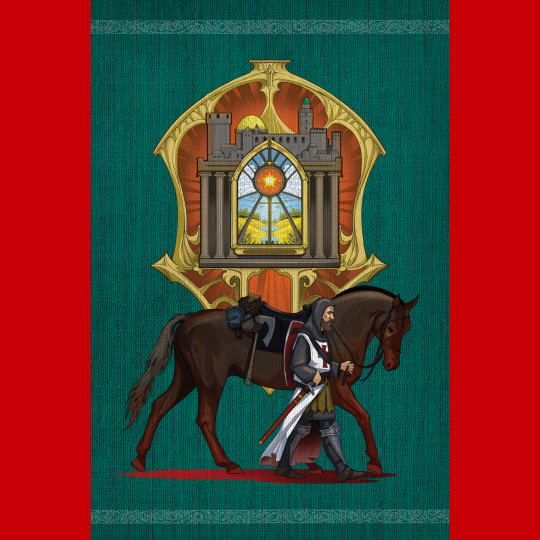
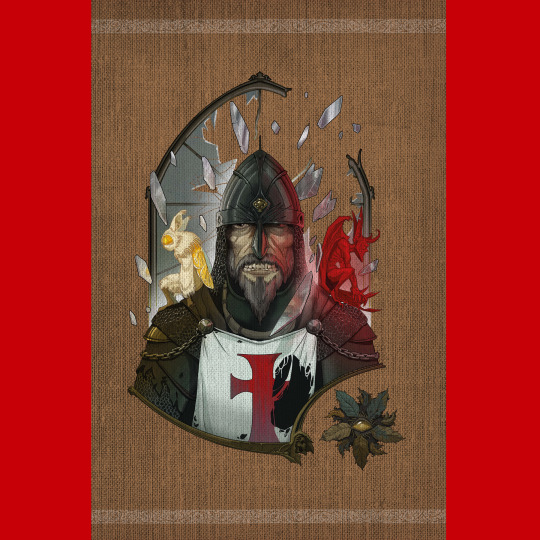
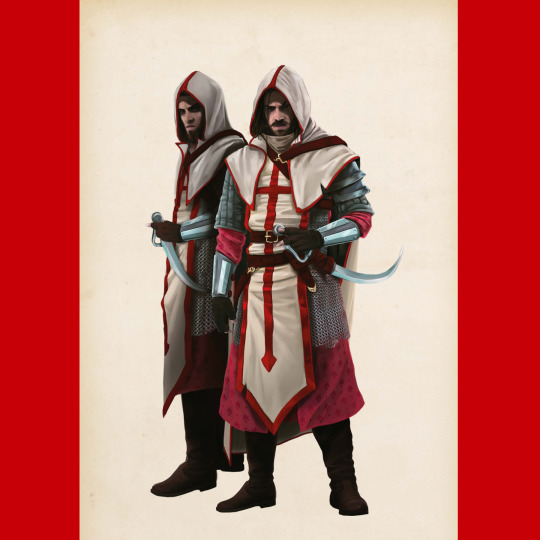
Heirs to Heresy (2021) is all sorts of interesting. Where the previous Osprey RPGs provide toolkits for creating bespoke ongoing campaigns, Heirs provides a defined campaign arc: players are Templars fleeing the destruction of their order at the hands of the king of France. They carry something important and they seek sanctuary. The specific nature of their cargo and their destination is up to the GM, but the thrust of every campaign is the same: flee, survive, preserve. In this way, the game is designed to examine and re-examine both the history and mythology surrounding the Knight Templars (of which there is no shortage).
System is 2d10 based, and uses attributes and skills to beat an array of difficulty numbers. There is slightly too much figuring for me to honestly call it “simple” but it is certainly uncomplicated. It is a high-powered game, with mechanical bonuses, special abilities and a suitably esoteric magic system making player characters more than a match for most opponents. The problem is that the adversaries who are on their level are terrifyingly capable and require care, planning and luck to overcome, usually at great cost. That distinction in opponents is one of my favorite bits of the game. Another is that only 30 Templars escape Paris at the start of the campaign, giving the players a both a pool of extra lives and a countdown timer — if all the Templars die, their treasure (and their hope) is lost.
I also love how the game interfaces with Templar lore. The secrets of these Templars will be discovered in play, but the rules give you access to frameworks that make all possibilities feasible, from the most realistic to the most sensationally supernatural. As someone who has had a shelf full of Templar books since the '90s, many of which are in the RPG’s reference section, and who has played nearly all the Assassin’s Creed games, I appreciate Heirs to Heresy’s commitment to leaving the truth of the Templars an open question.
73 notes
·
View notes